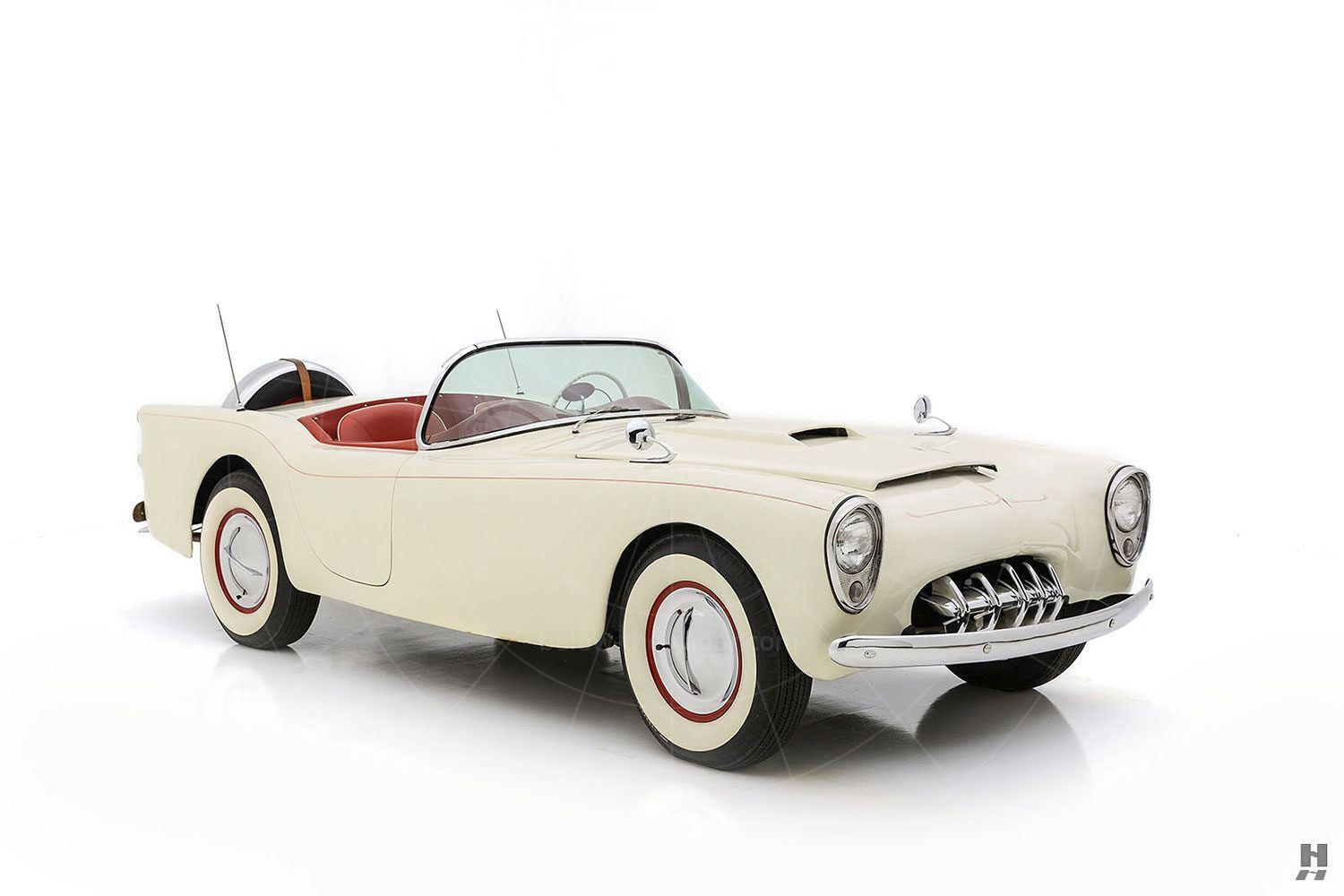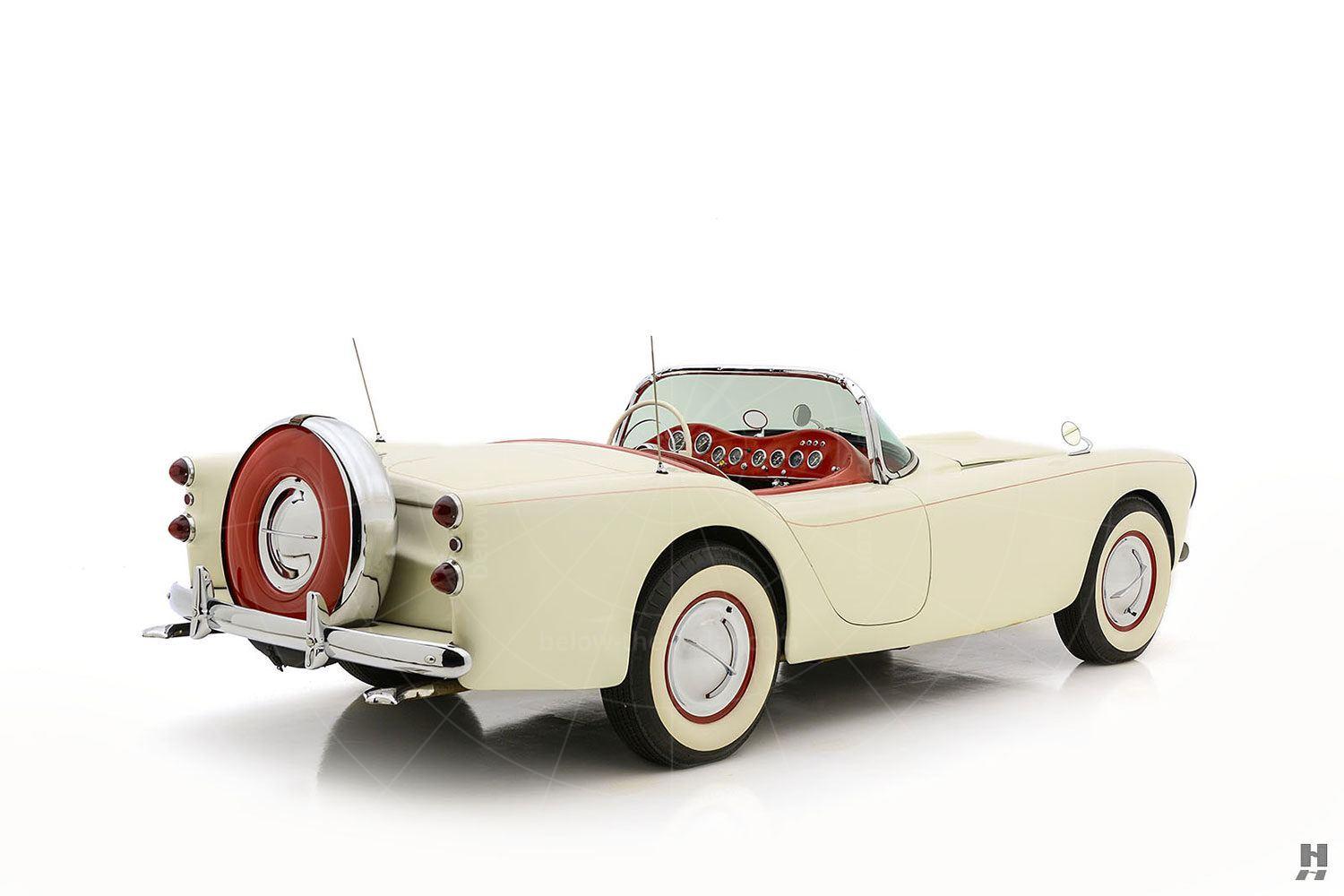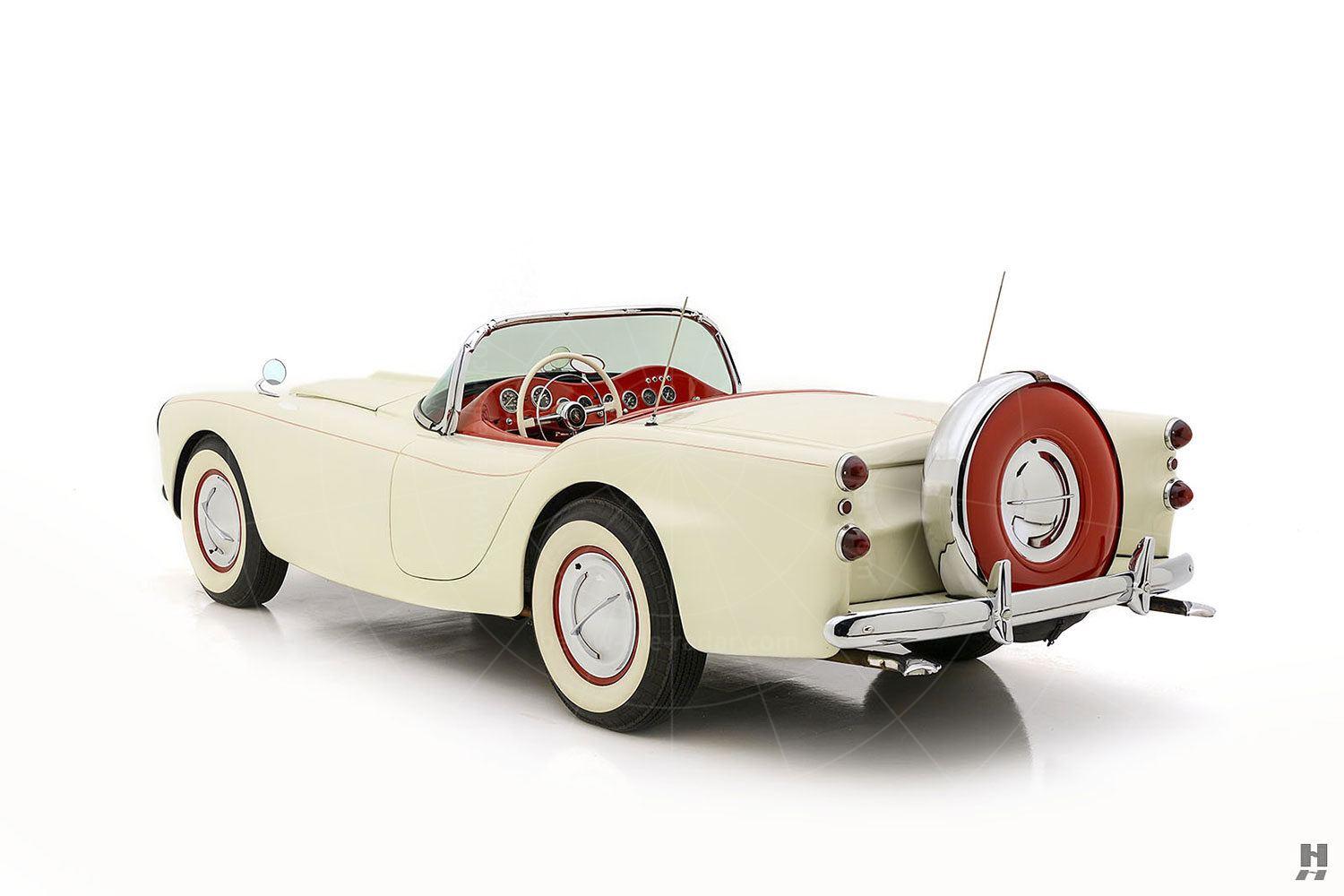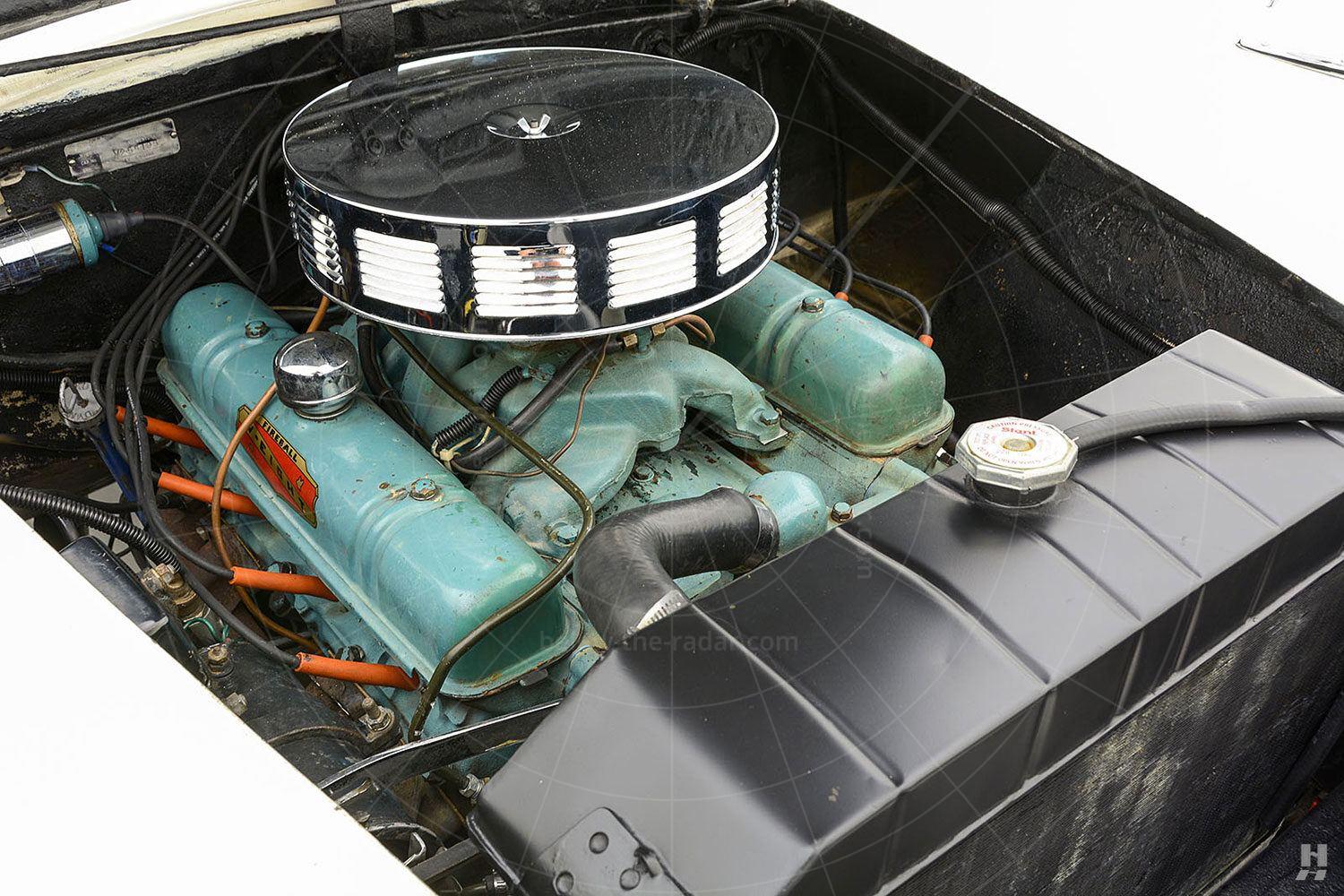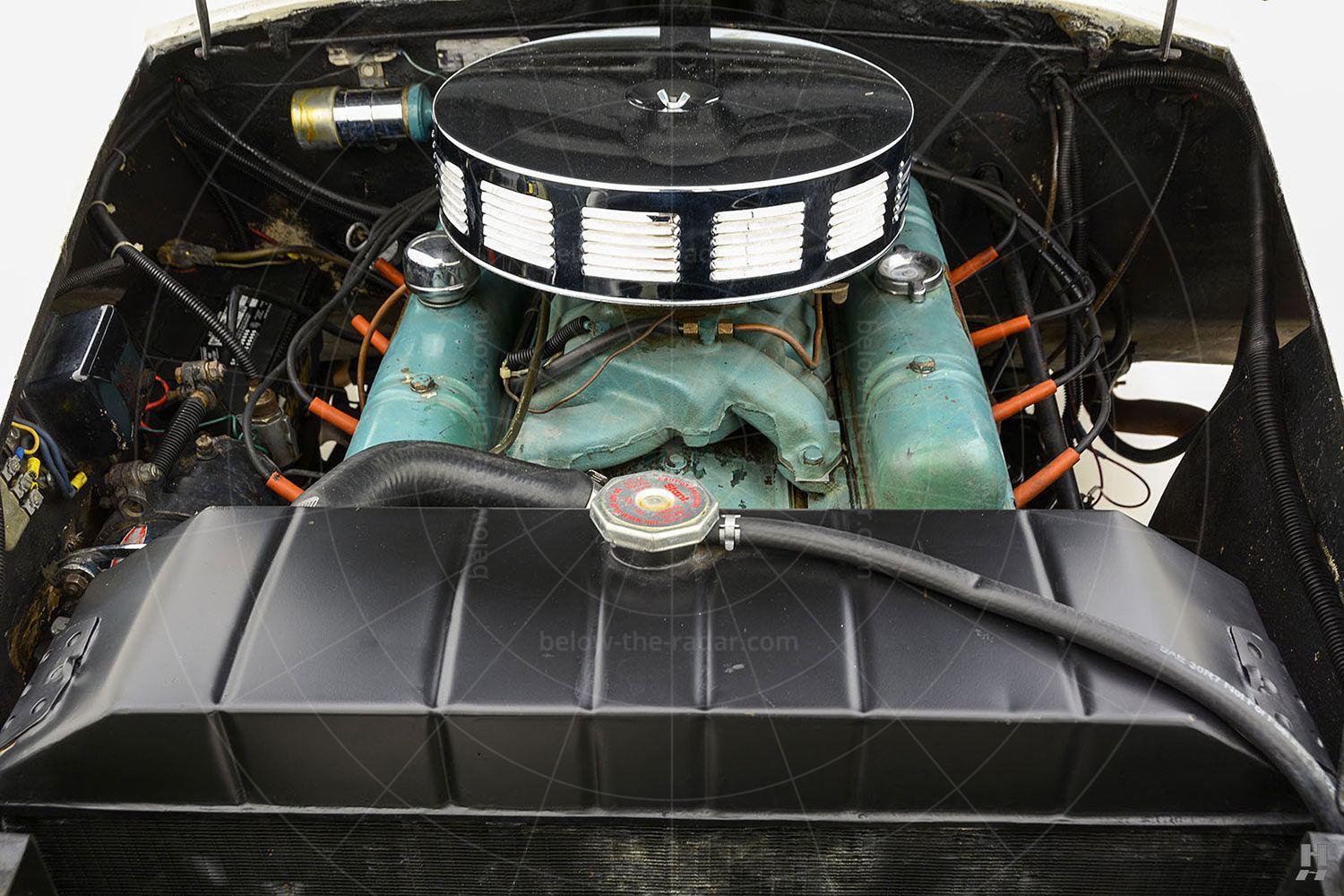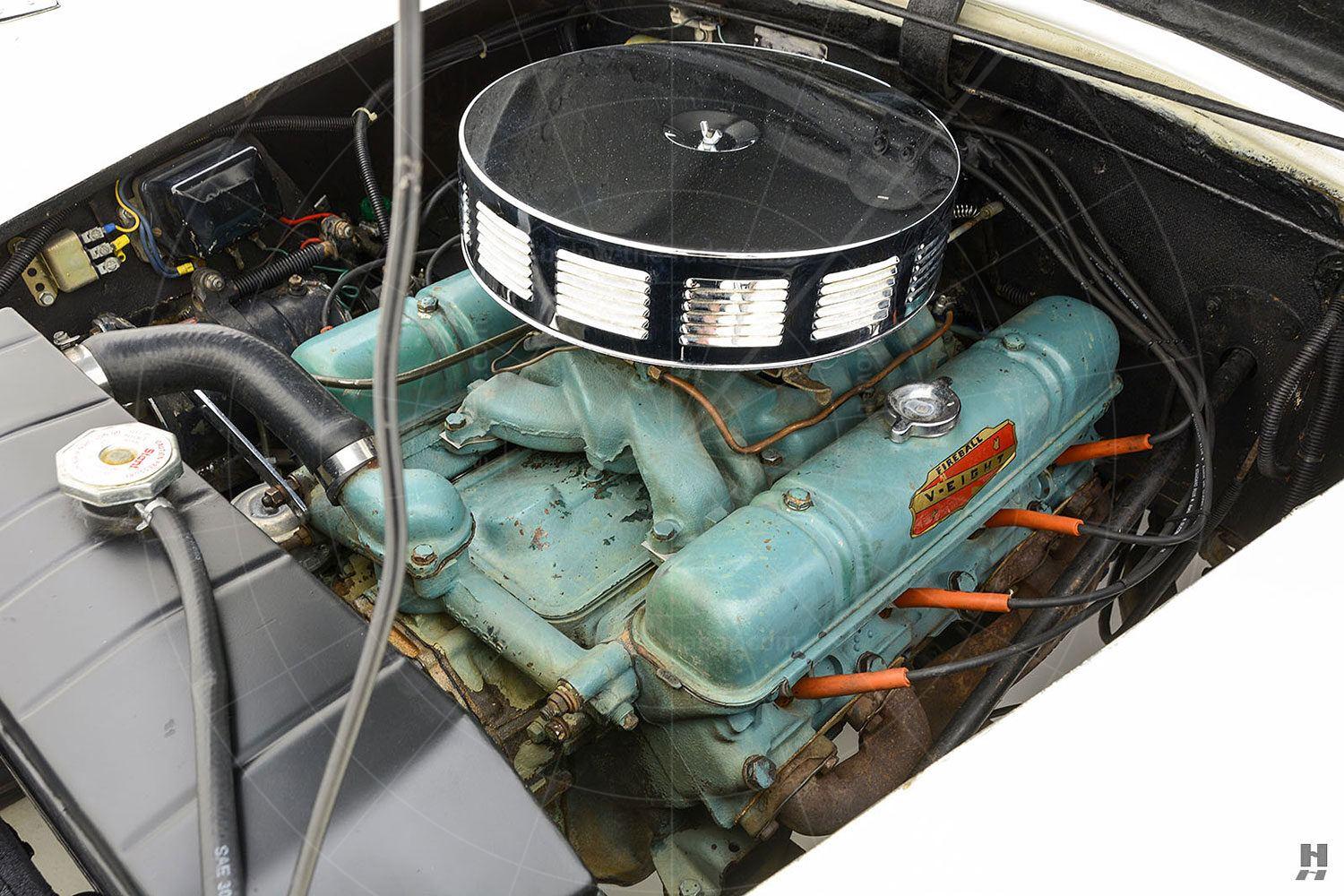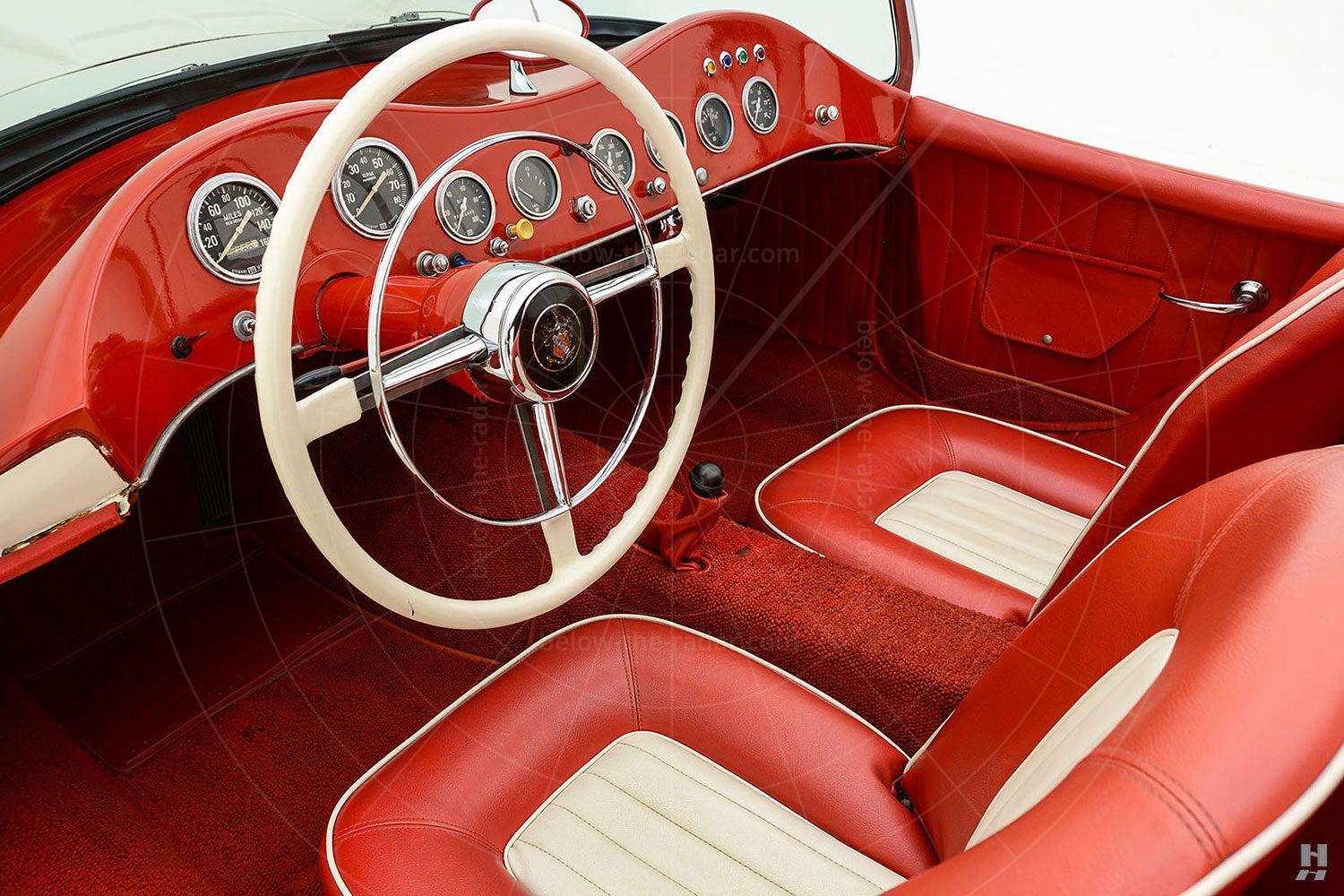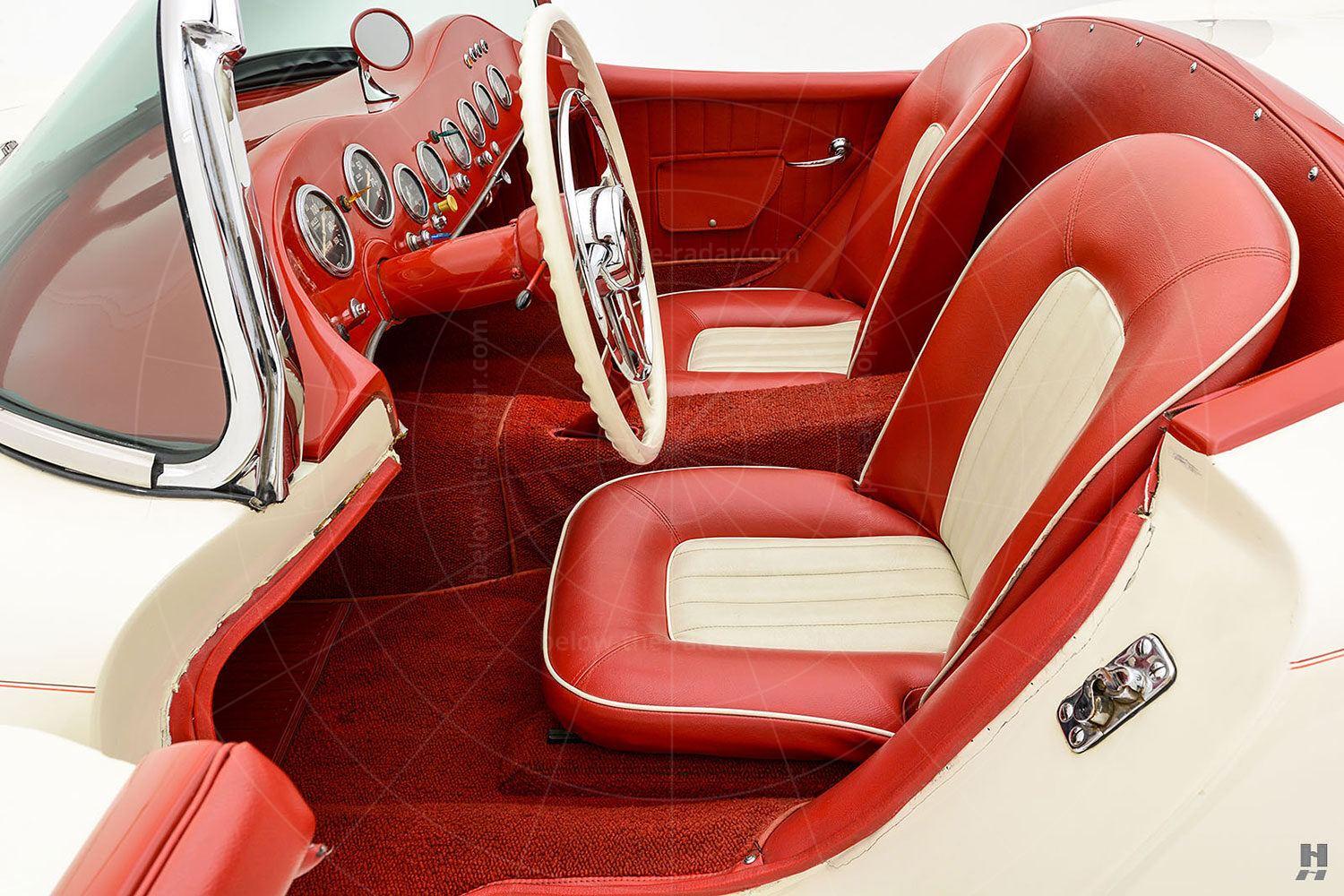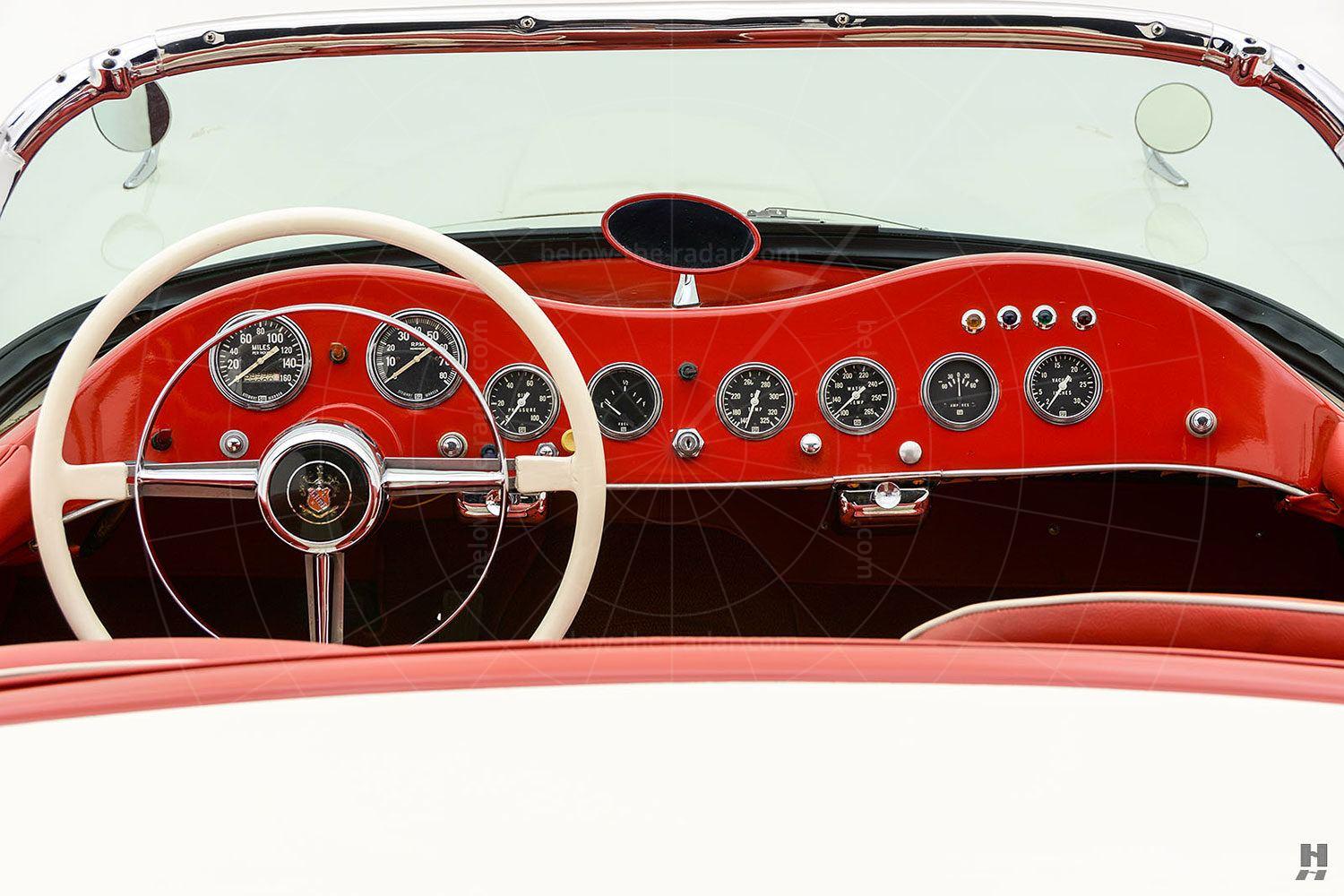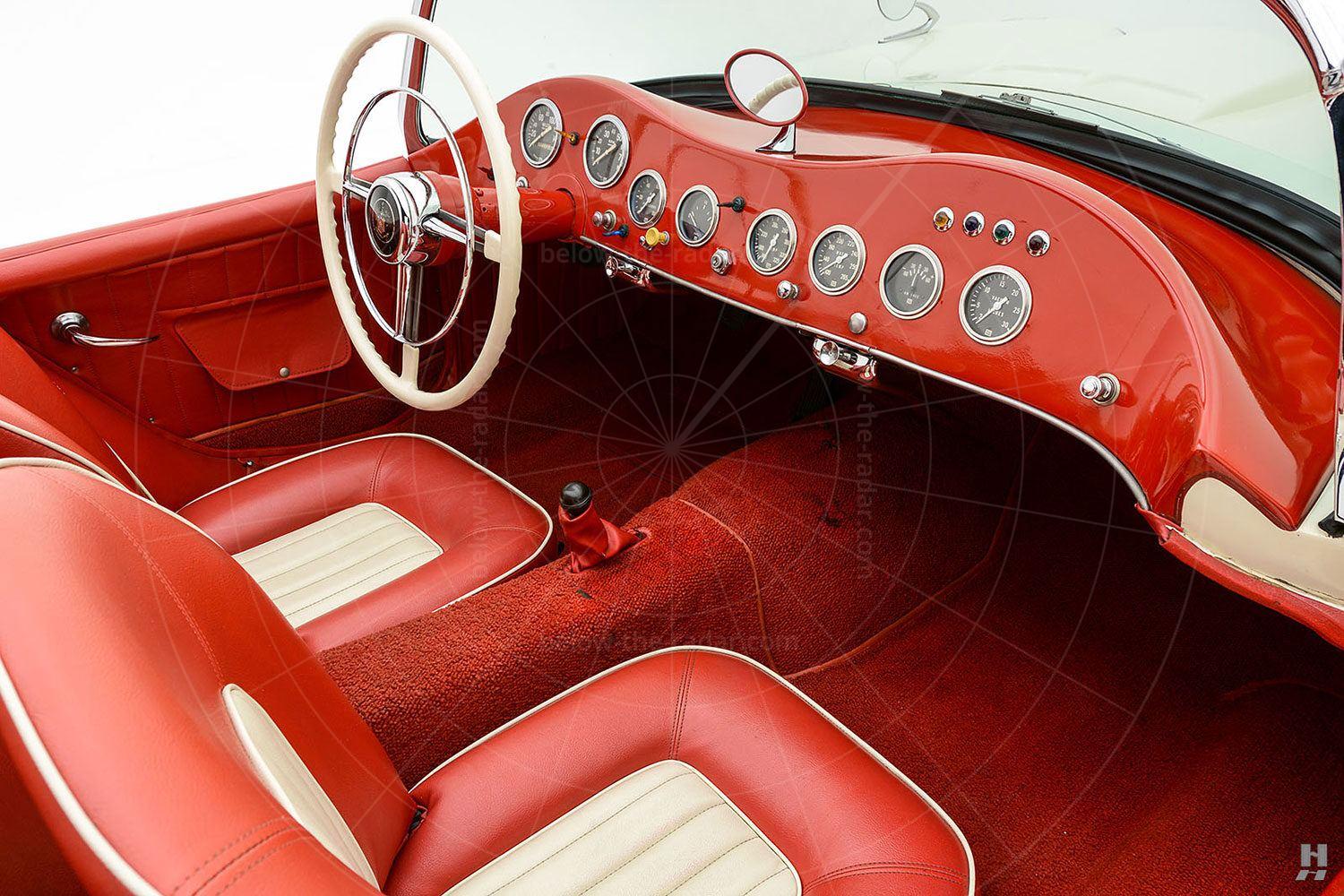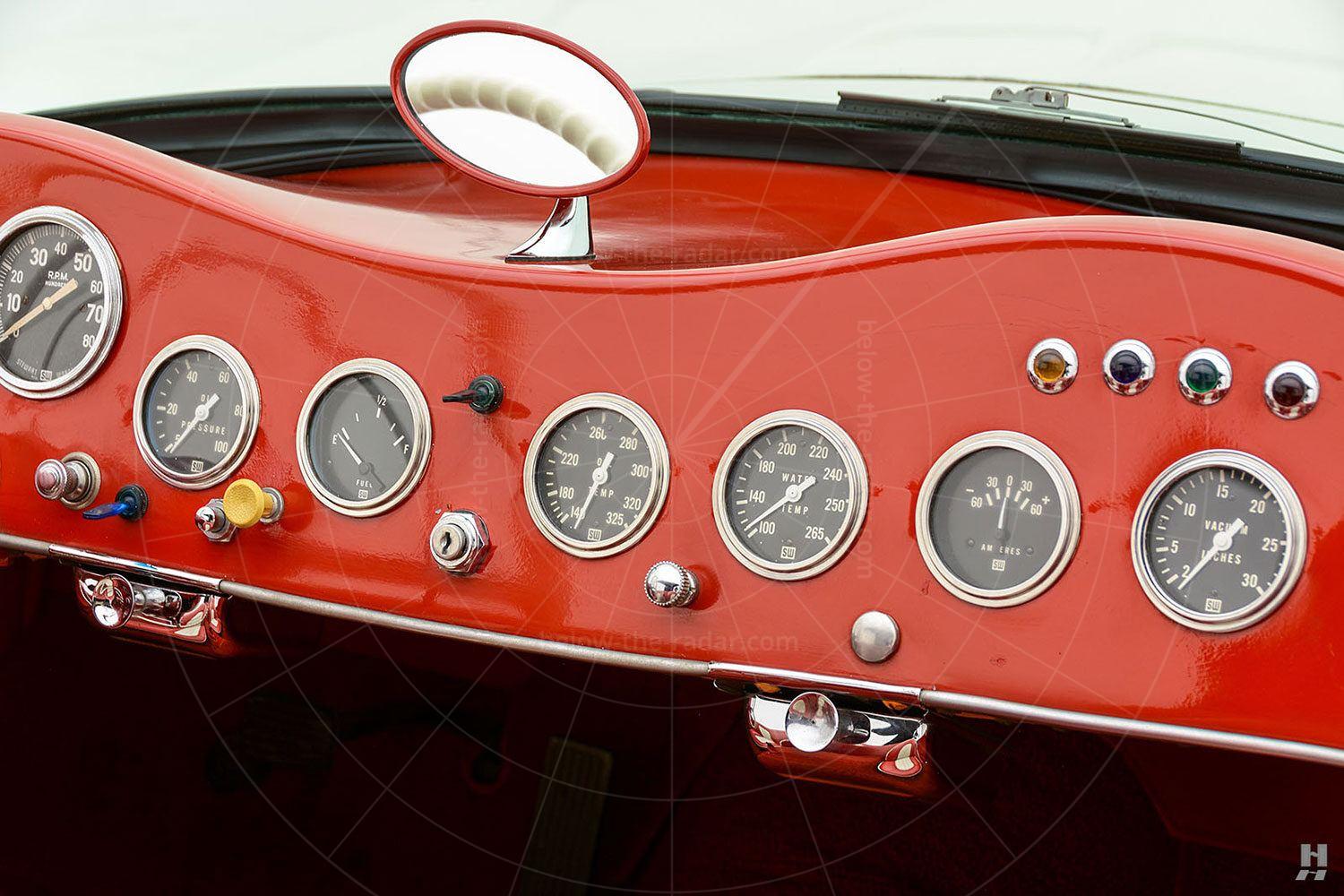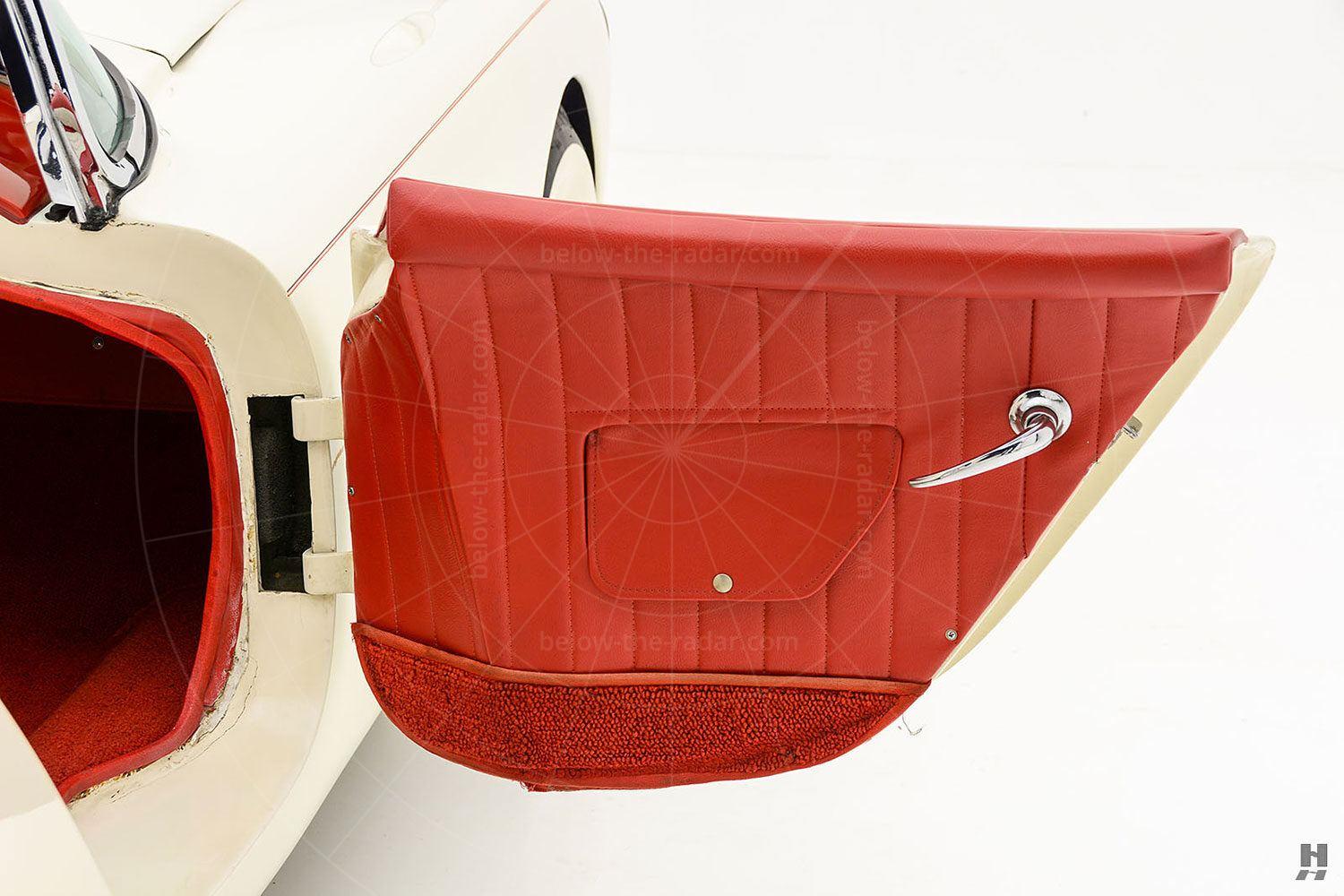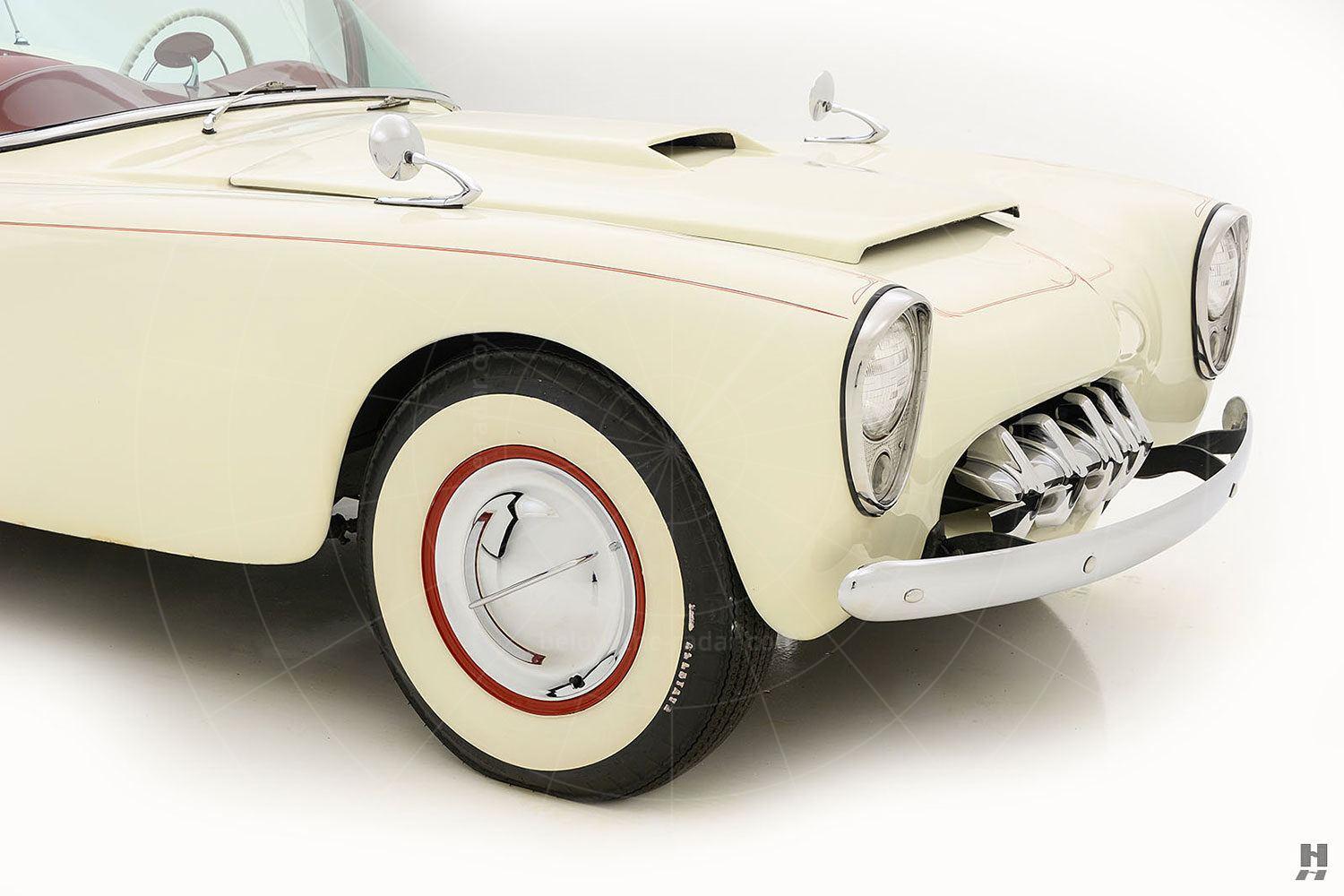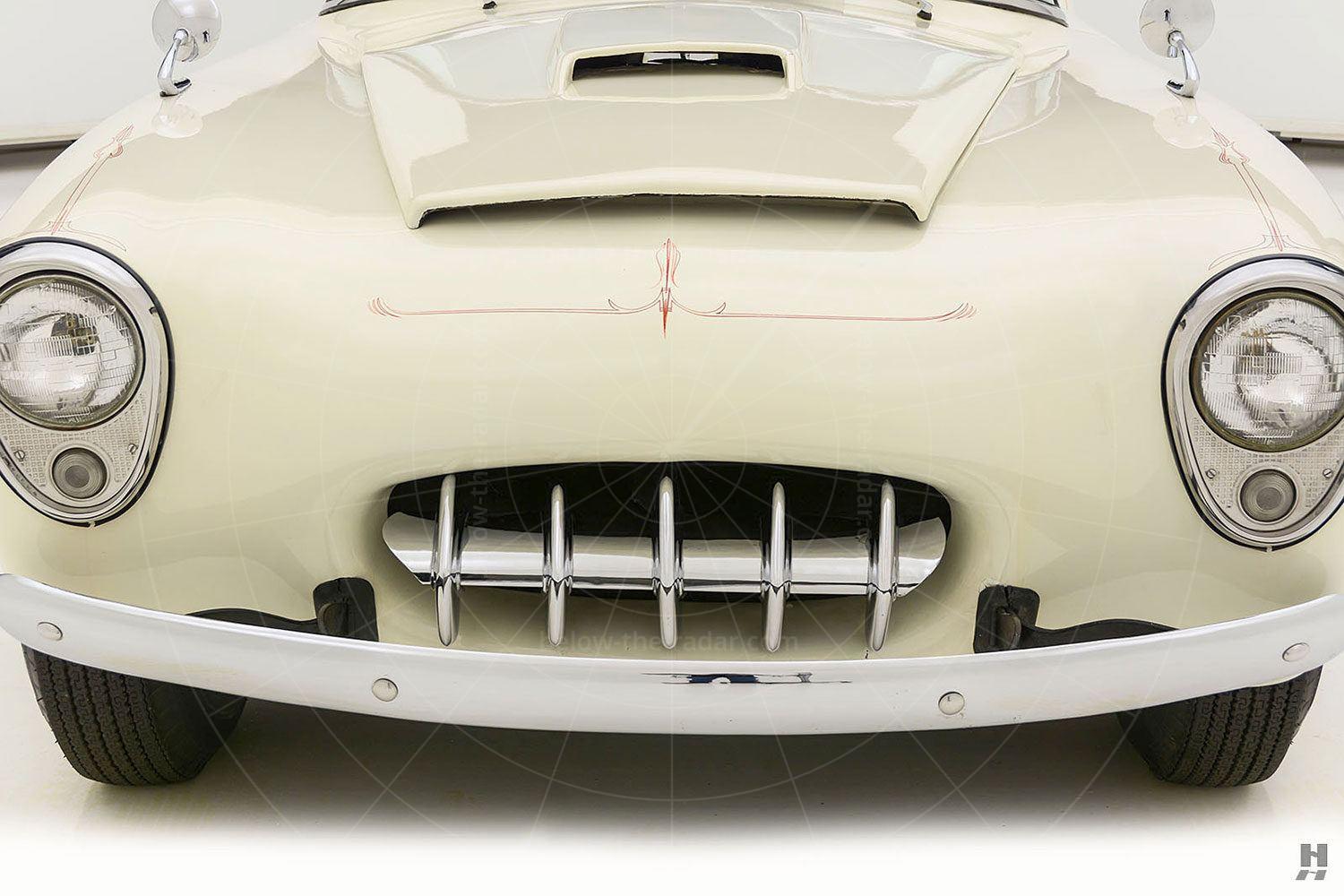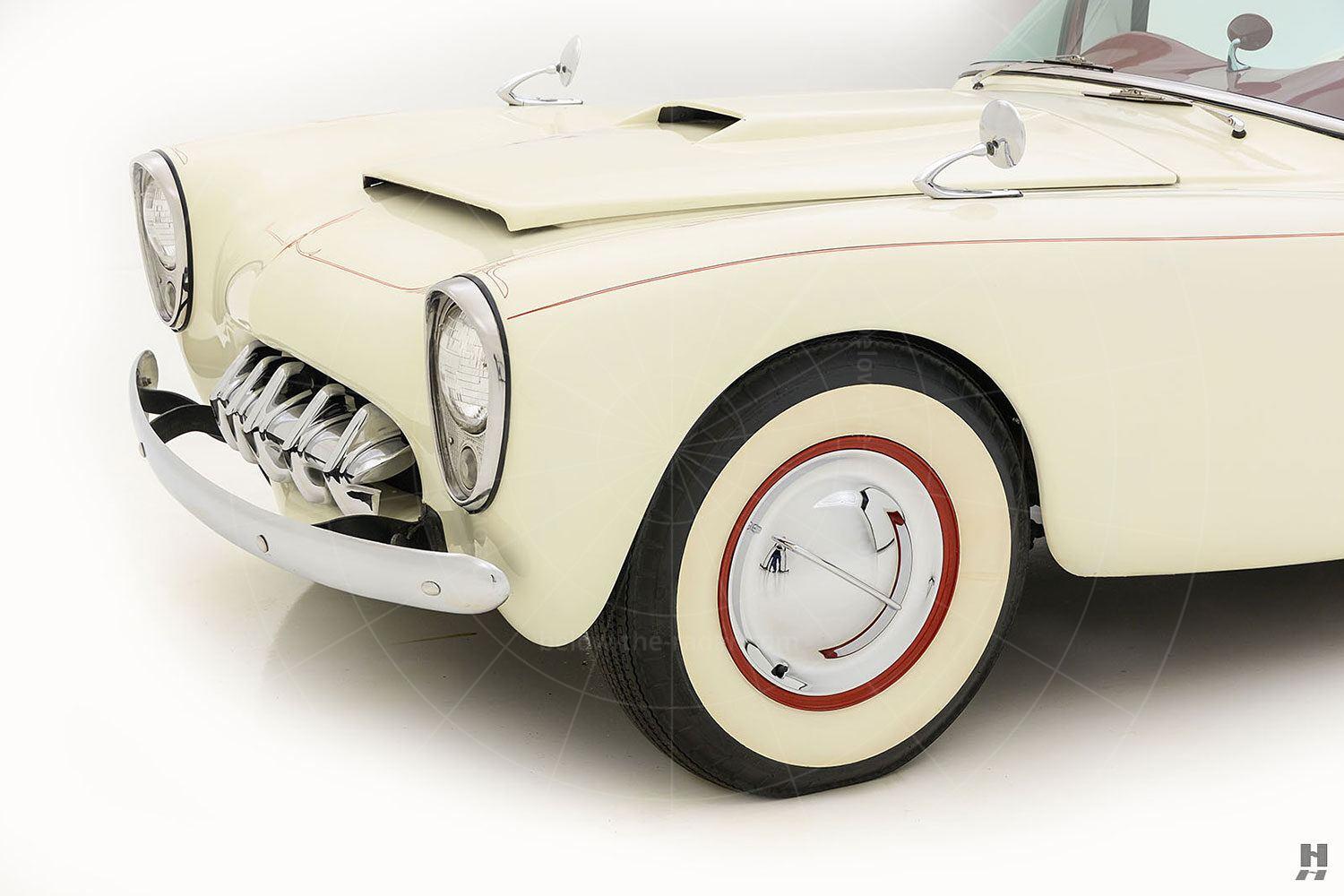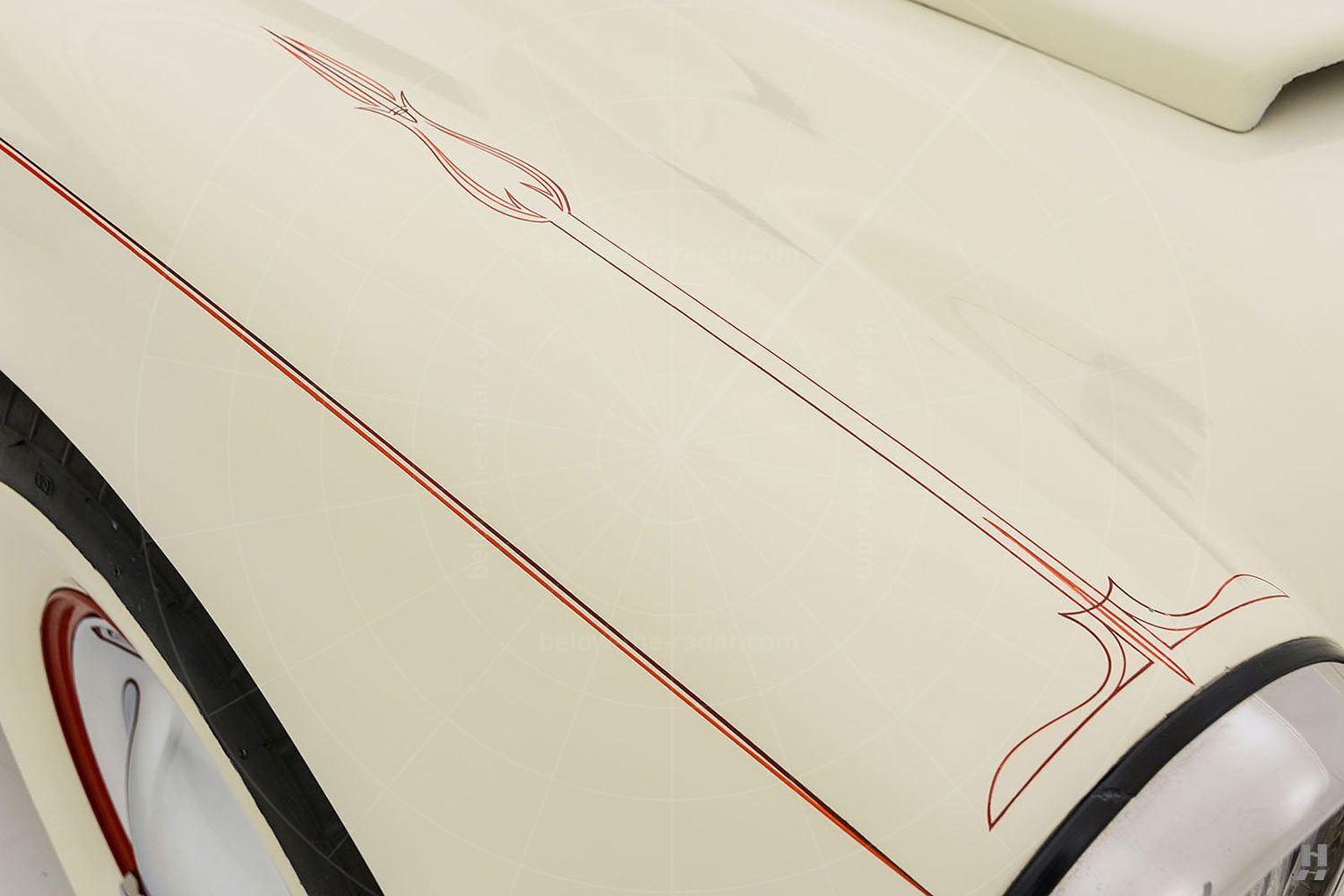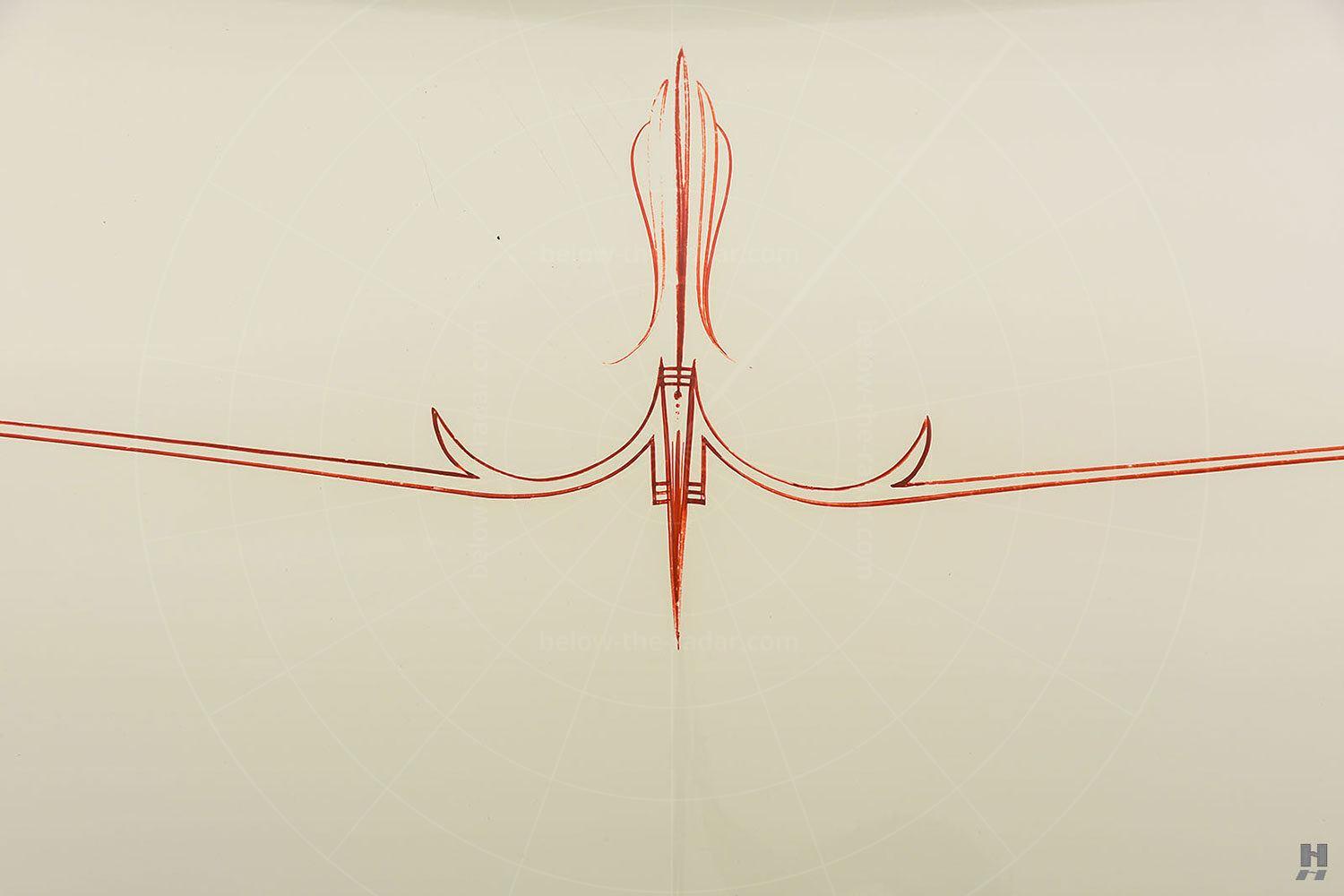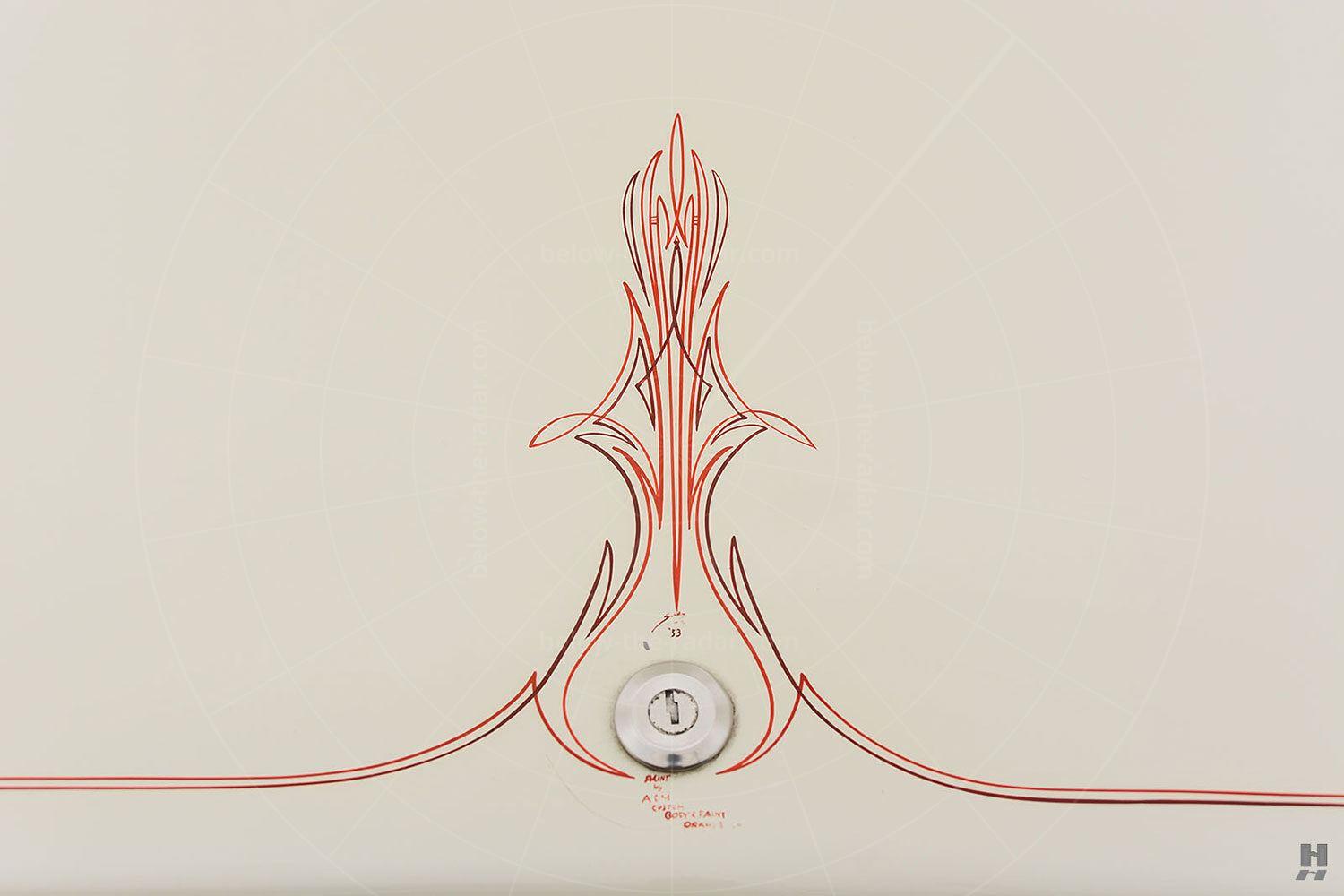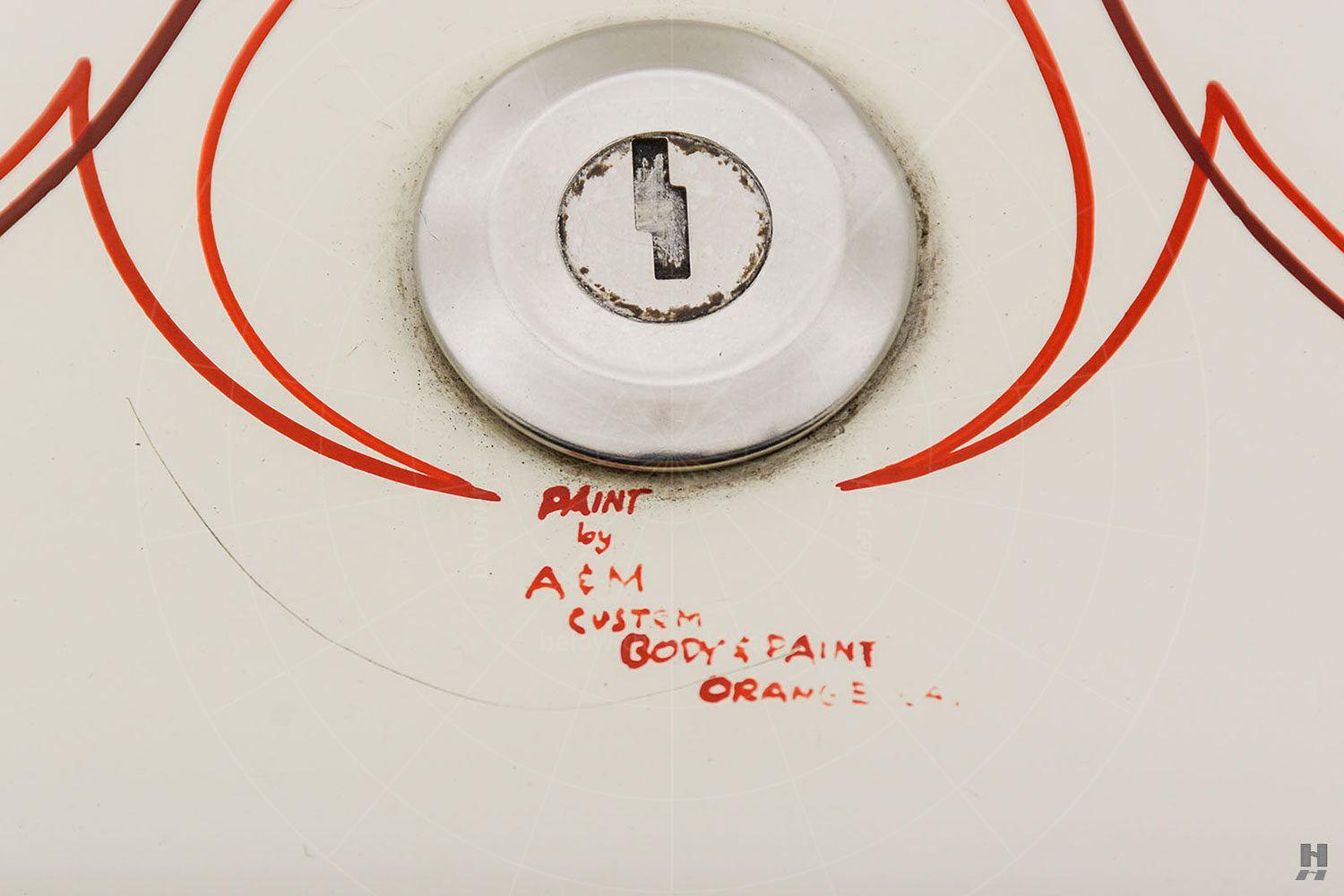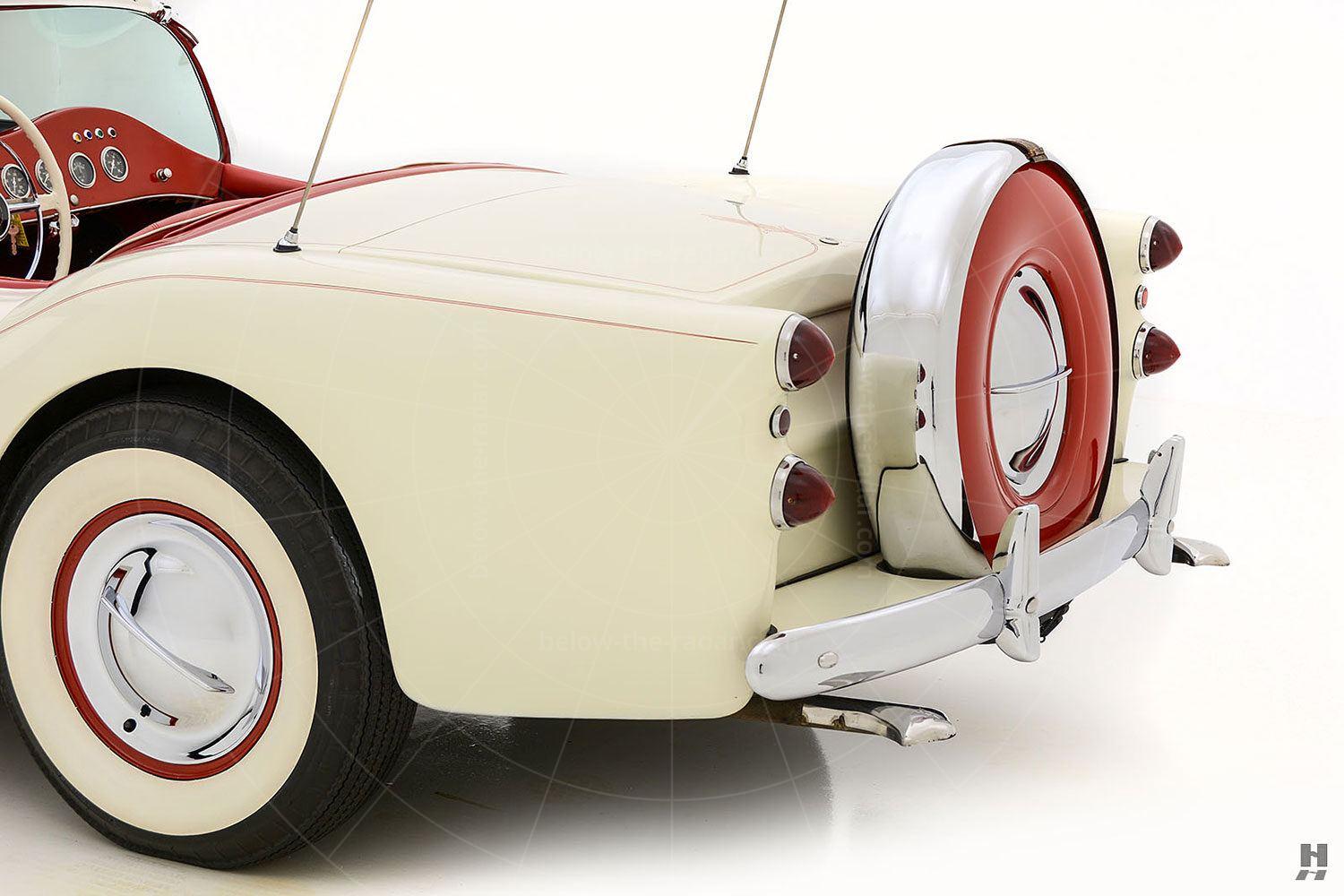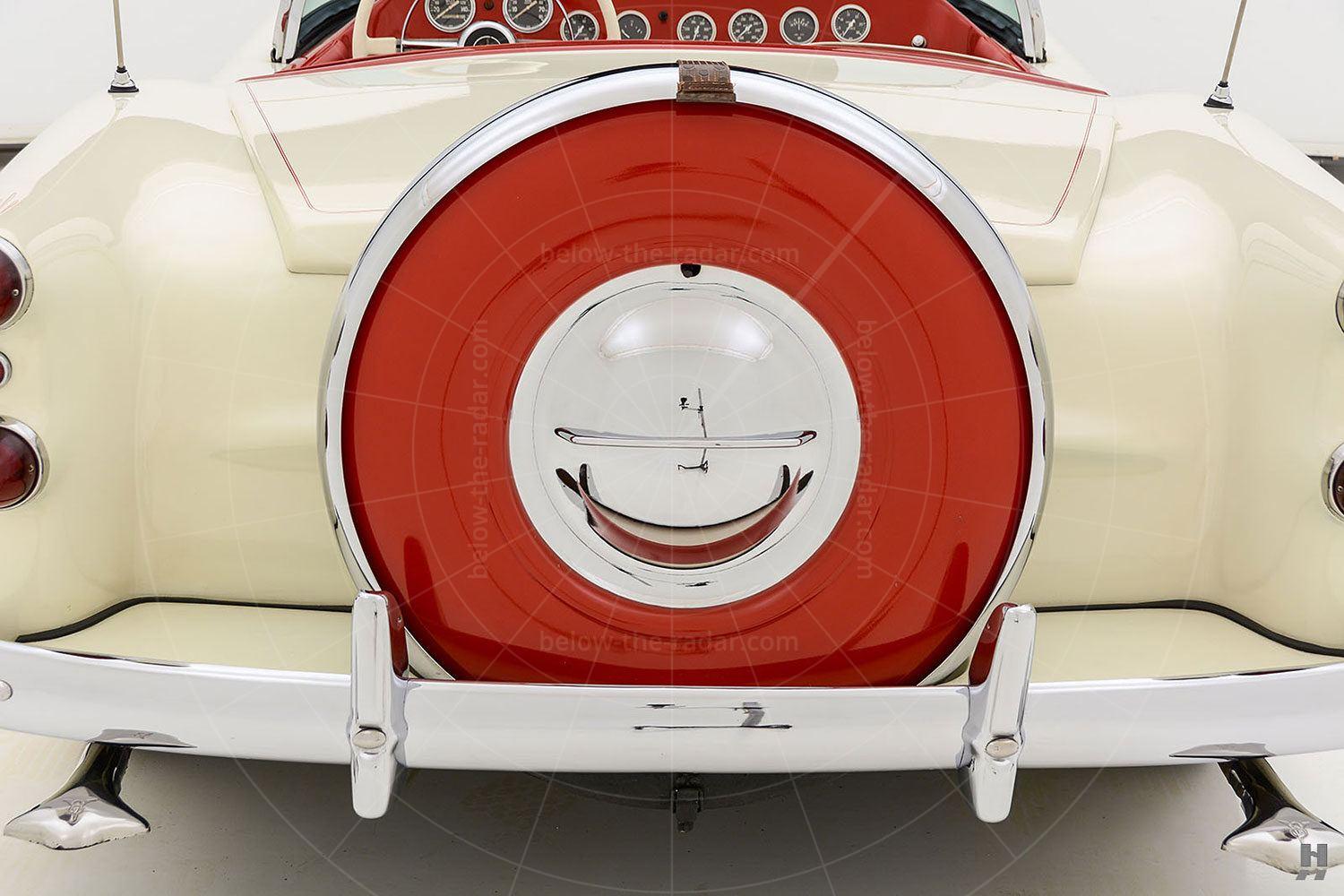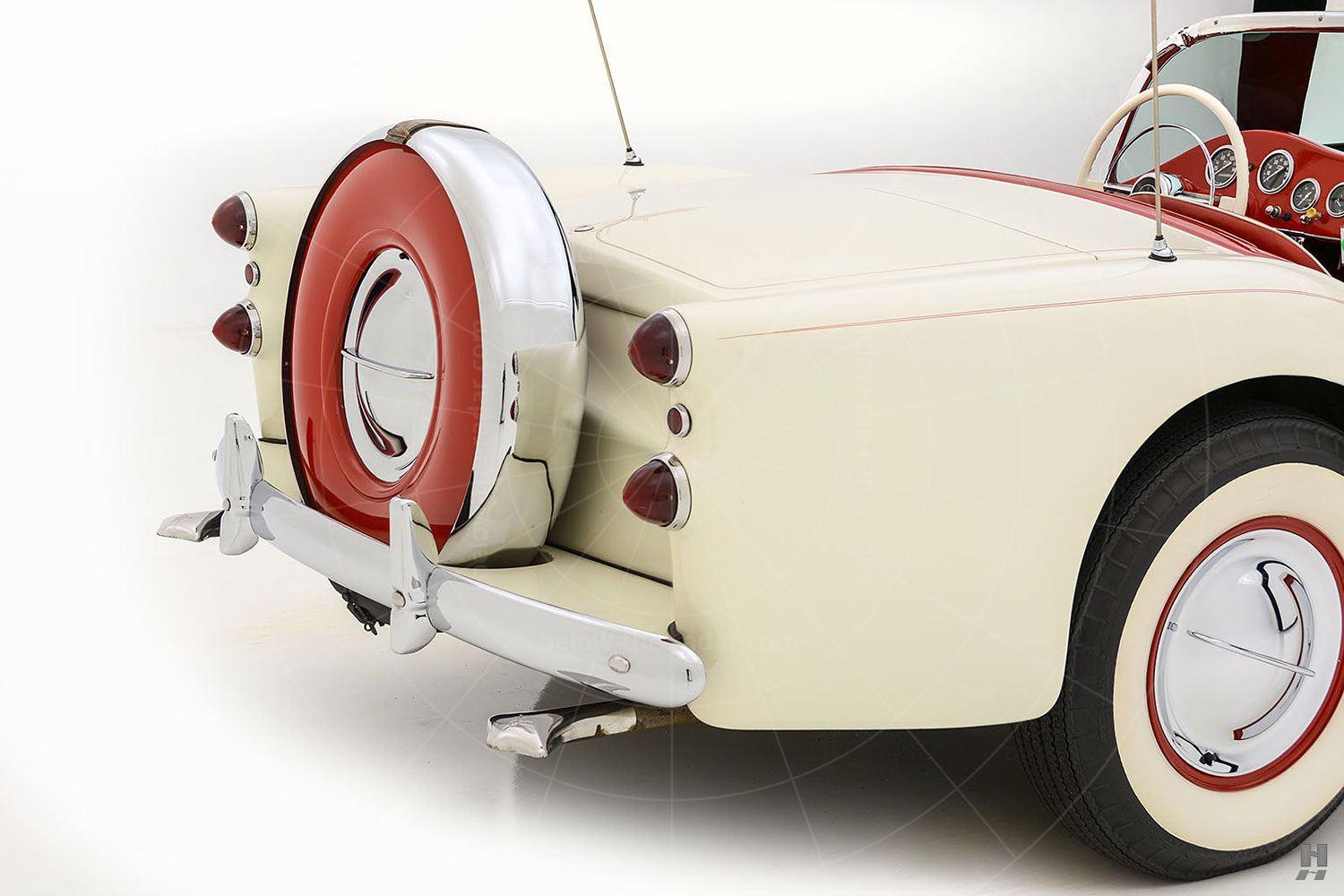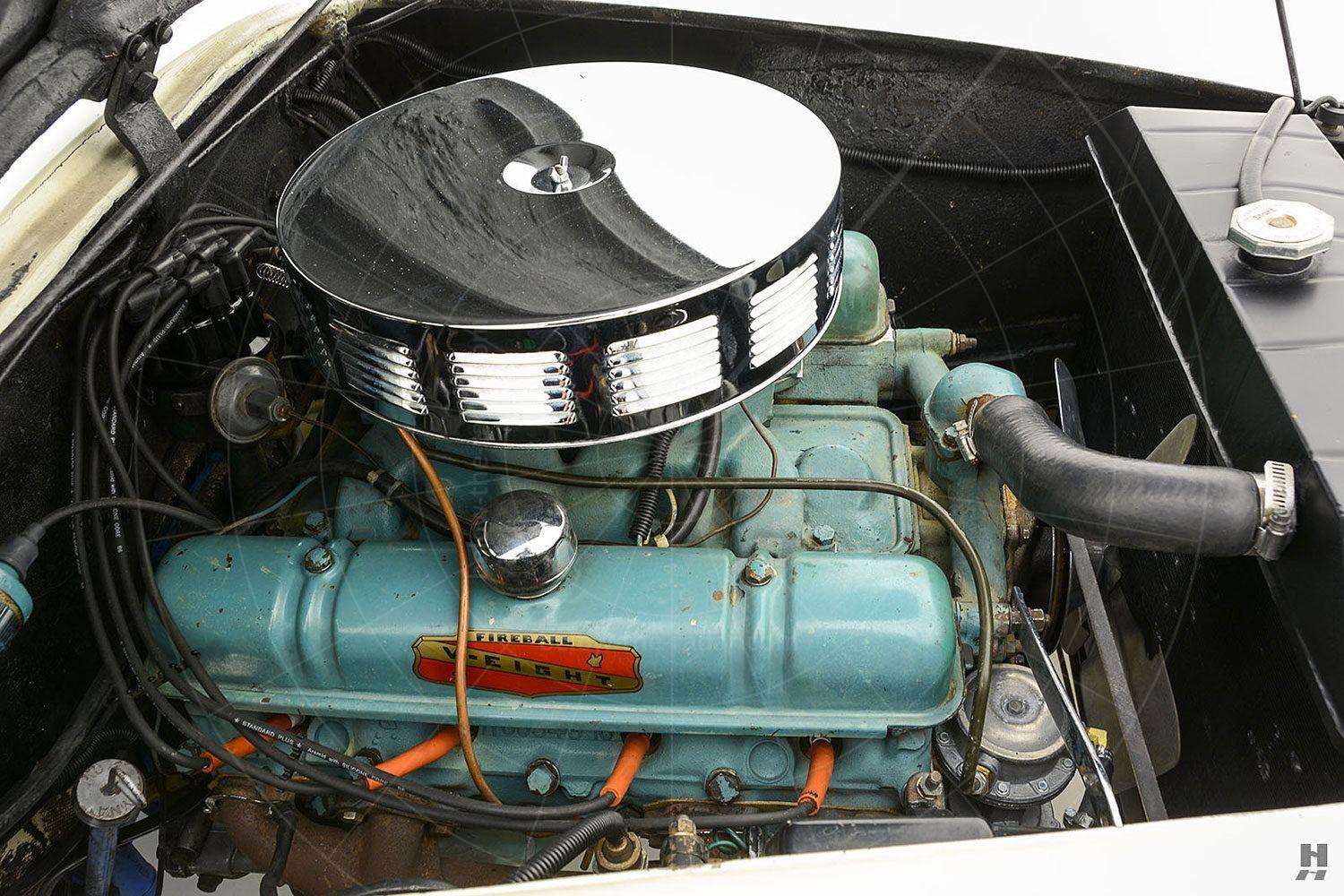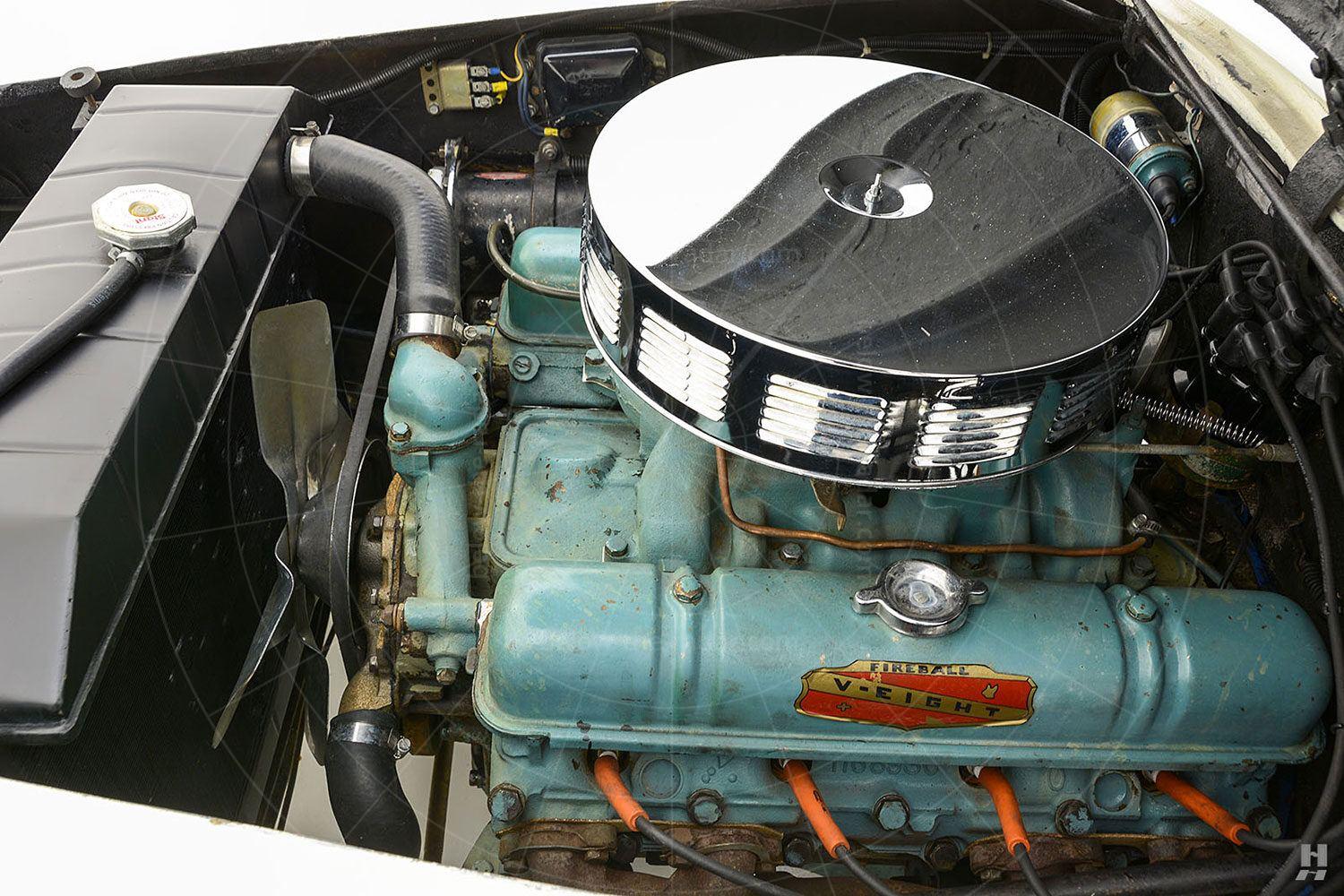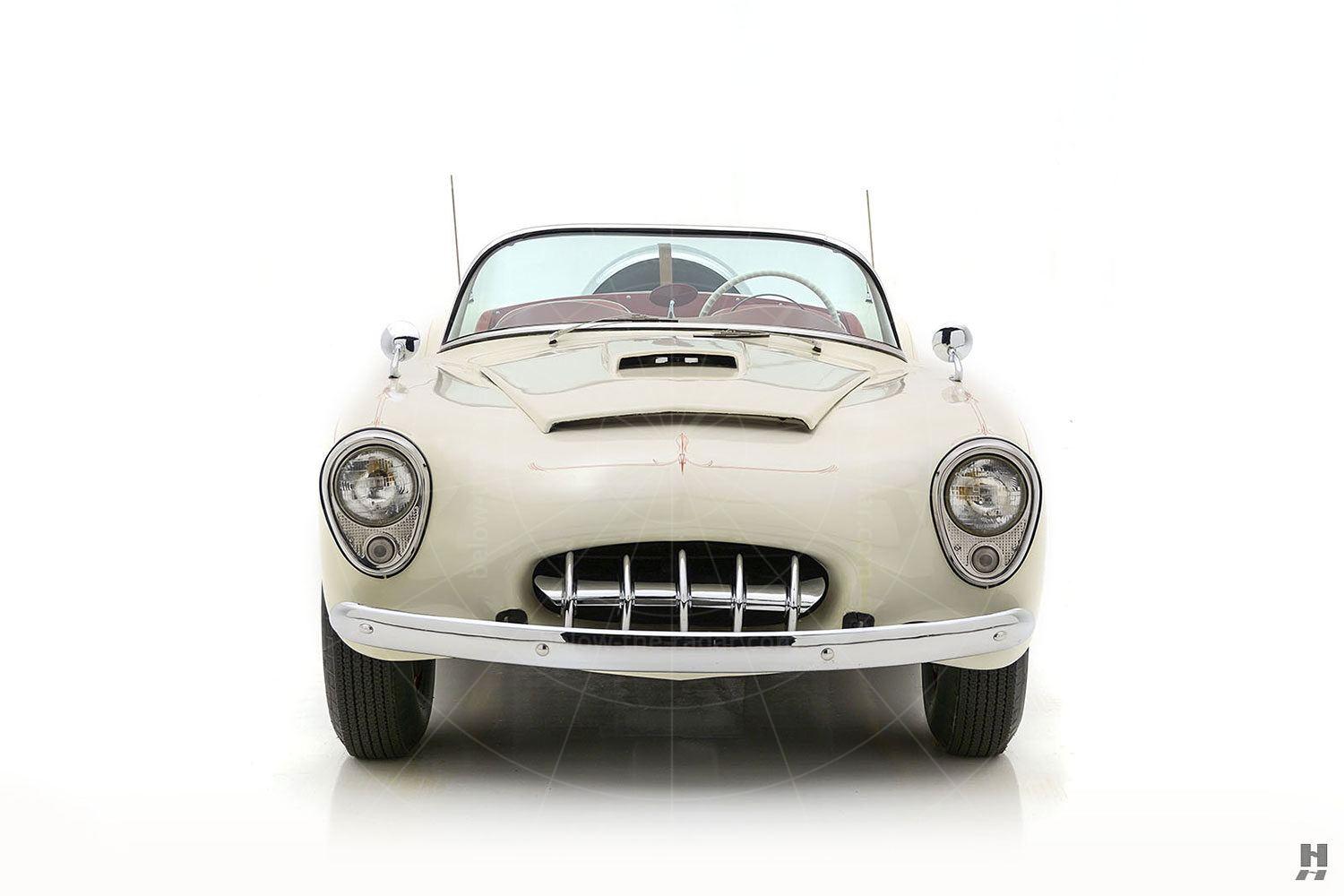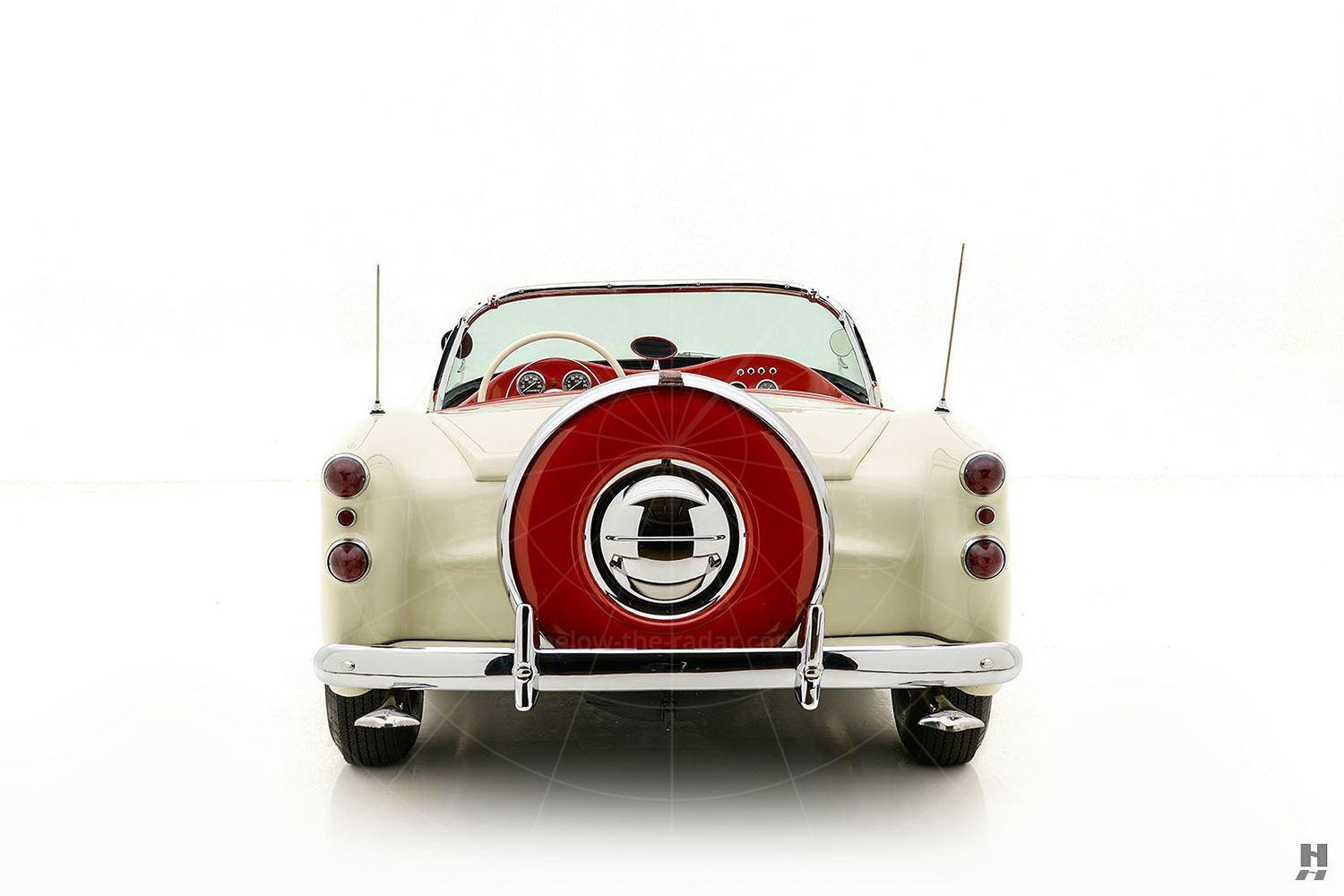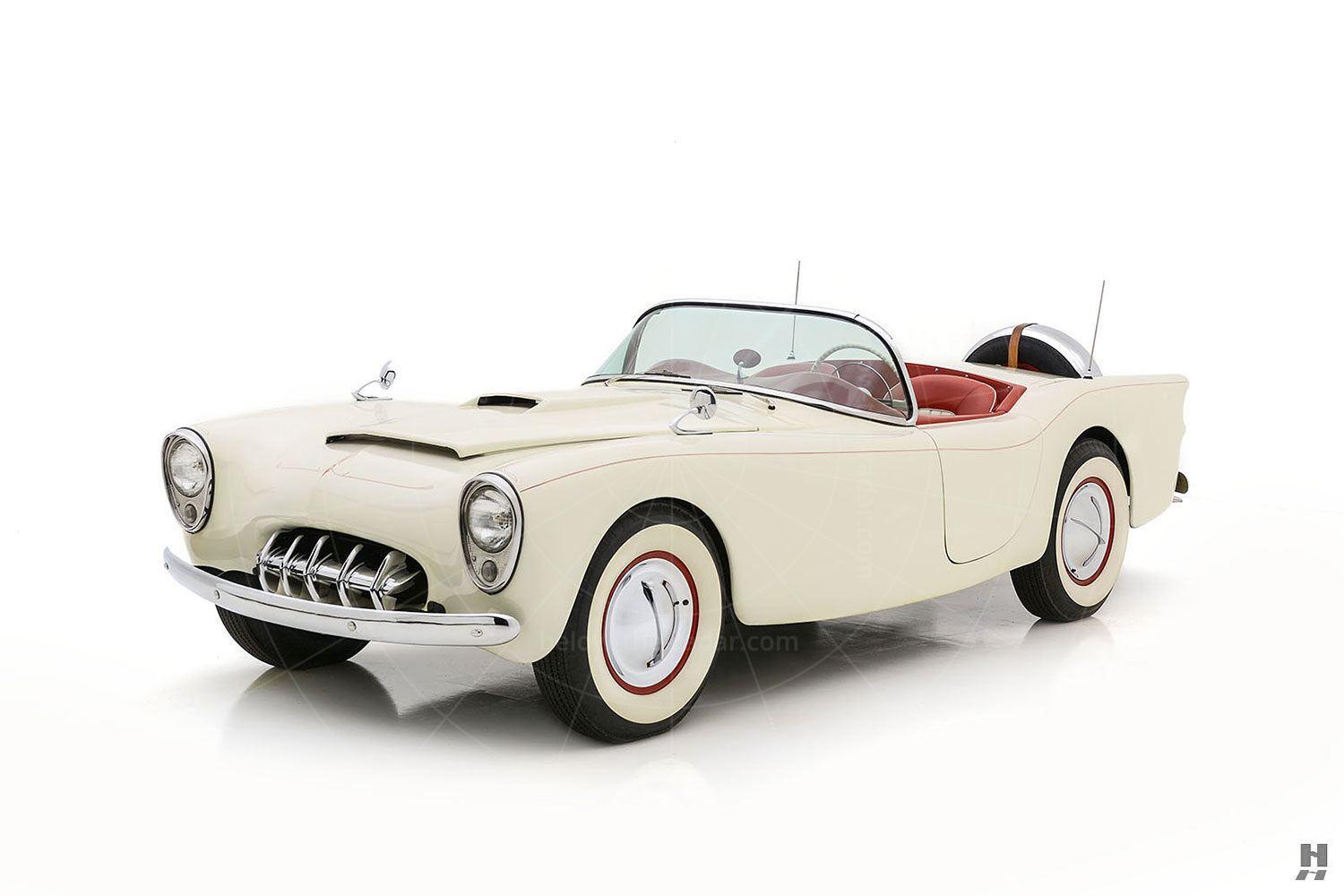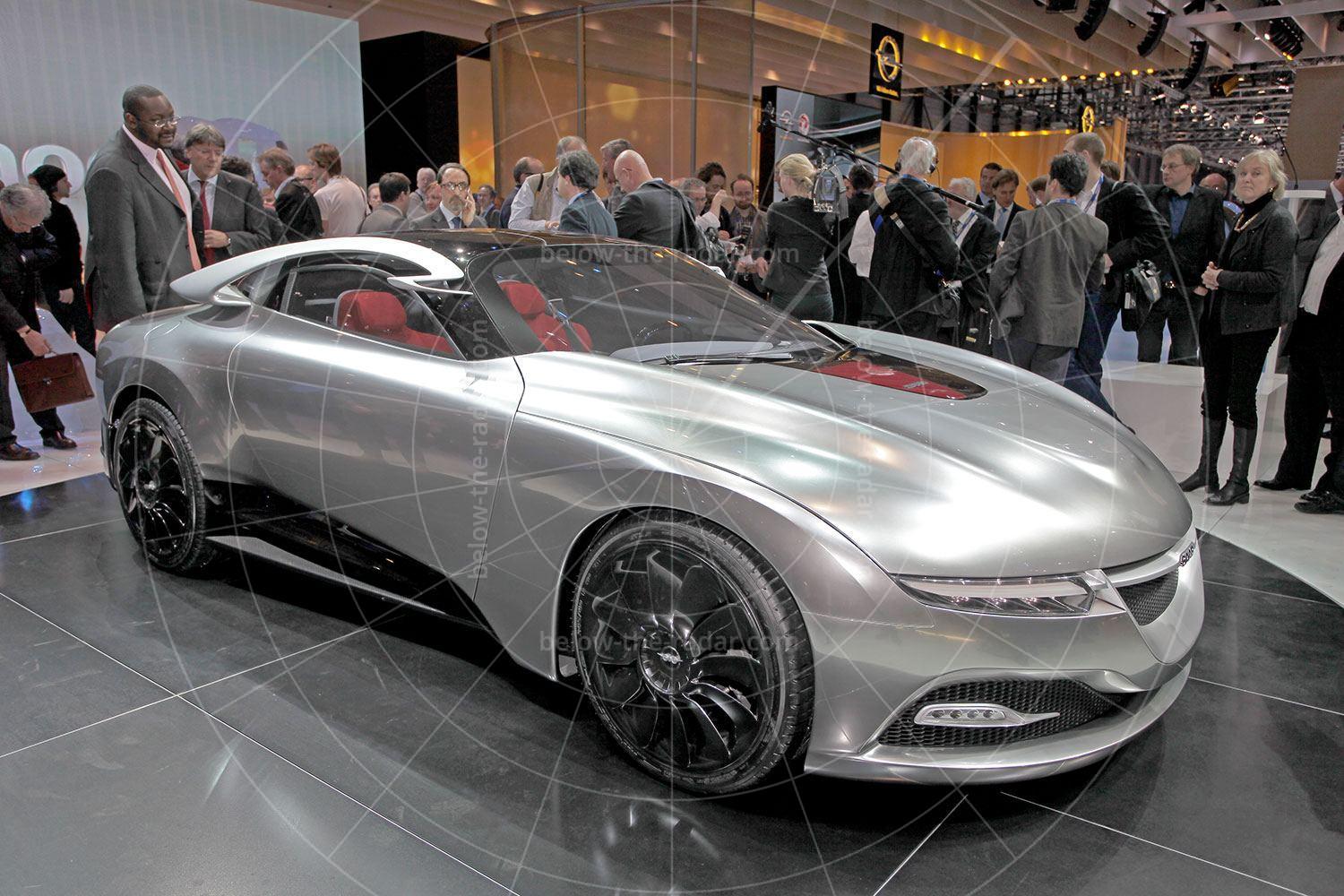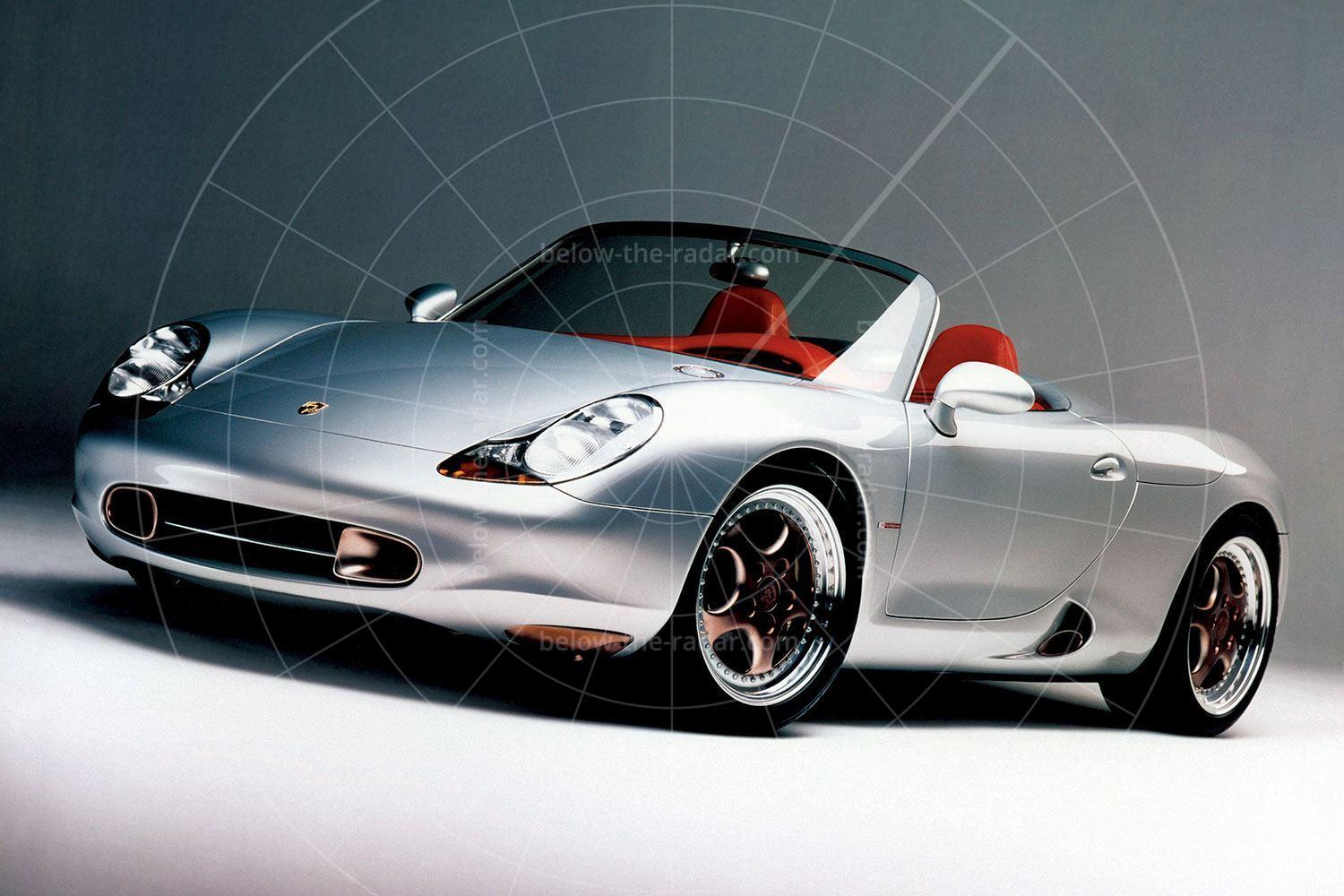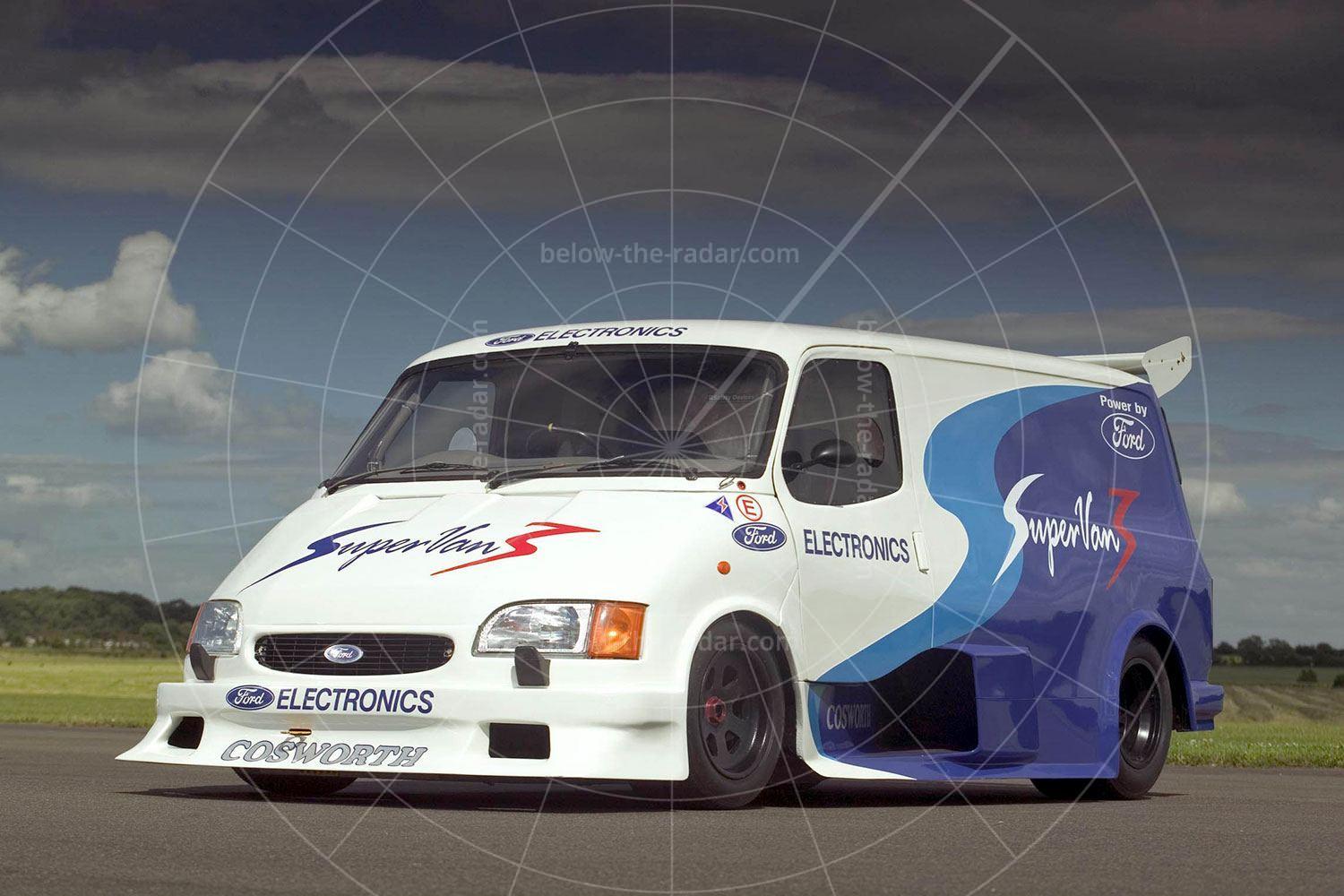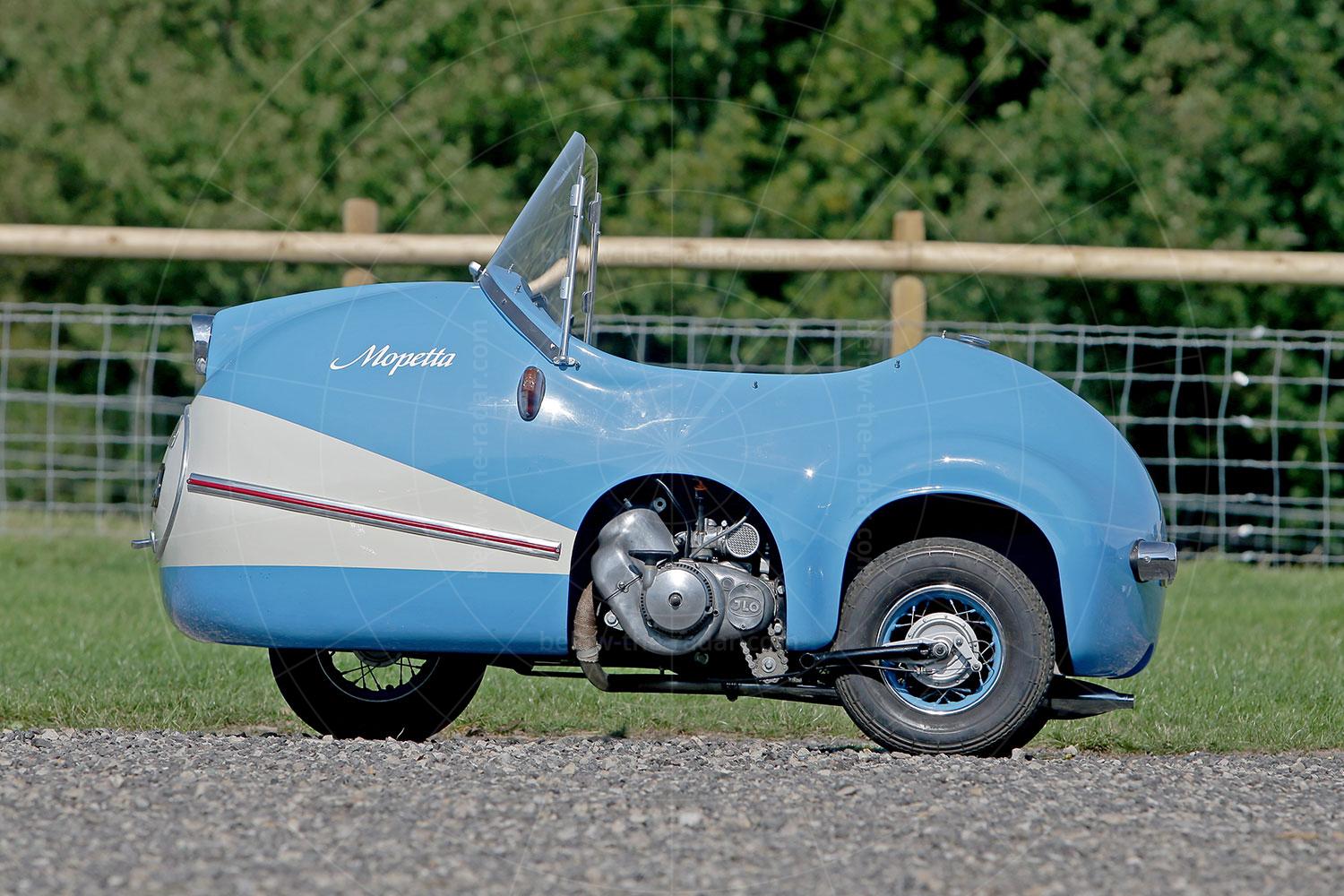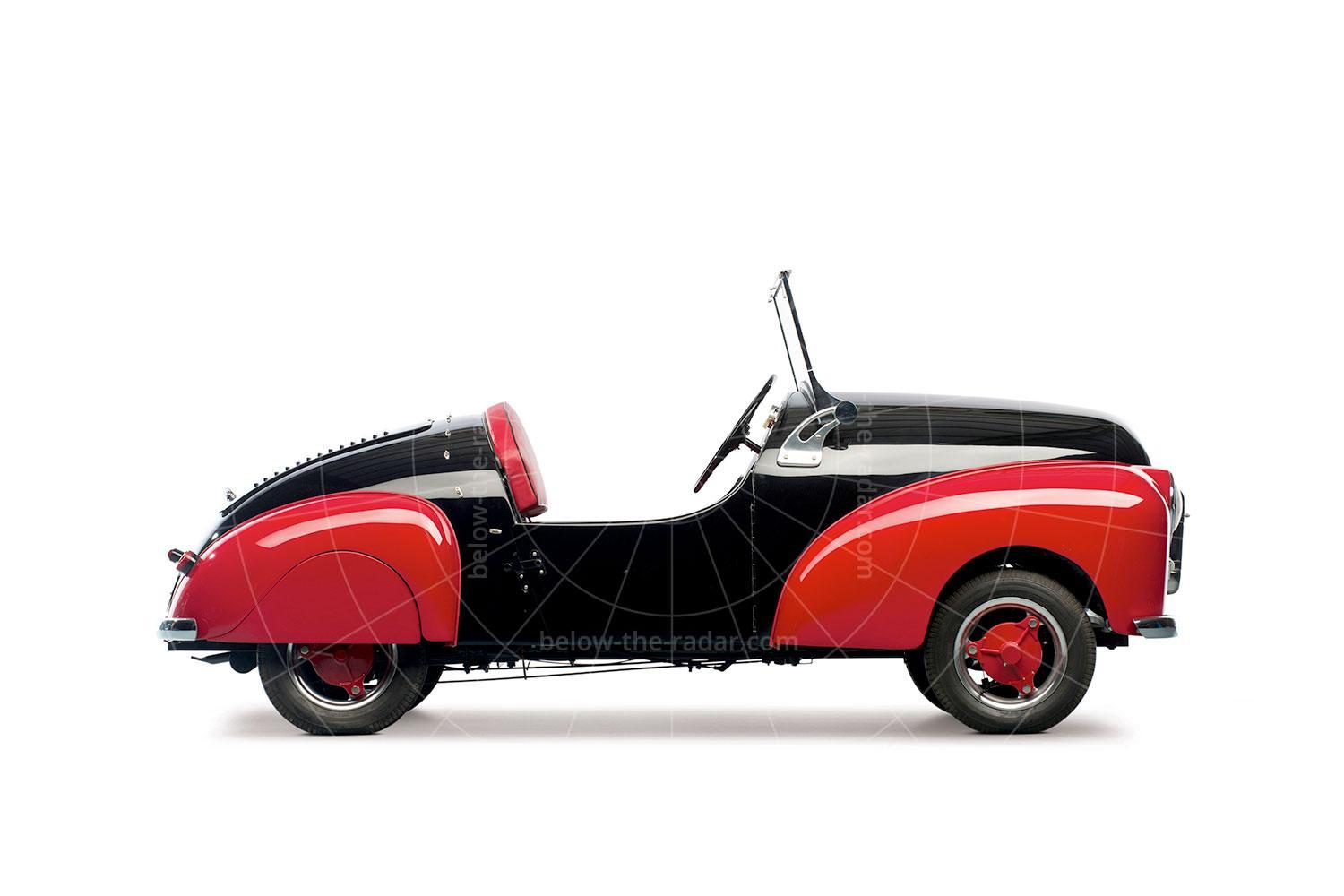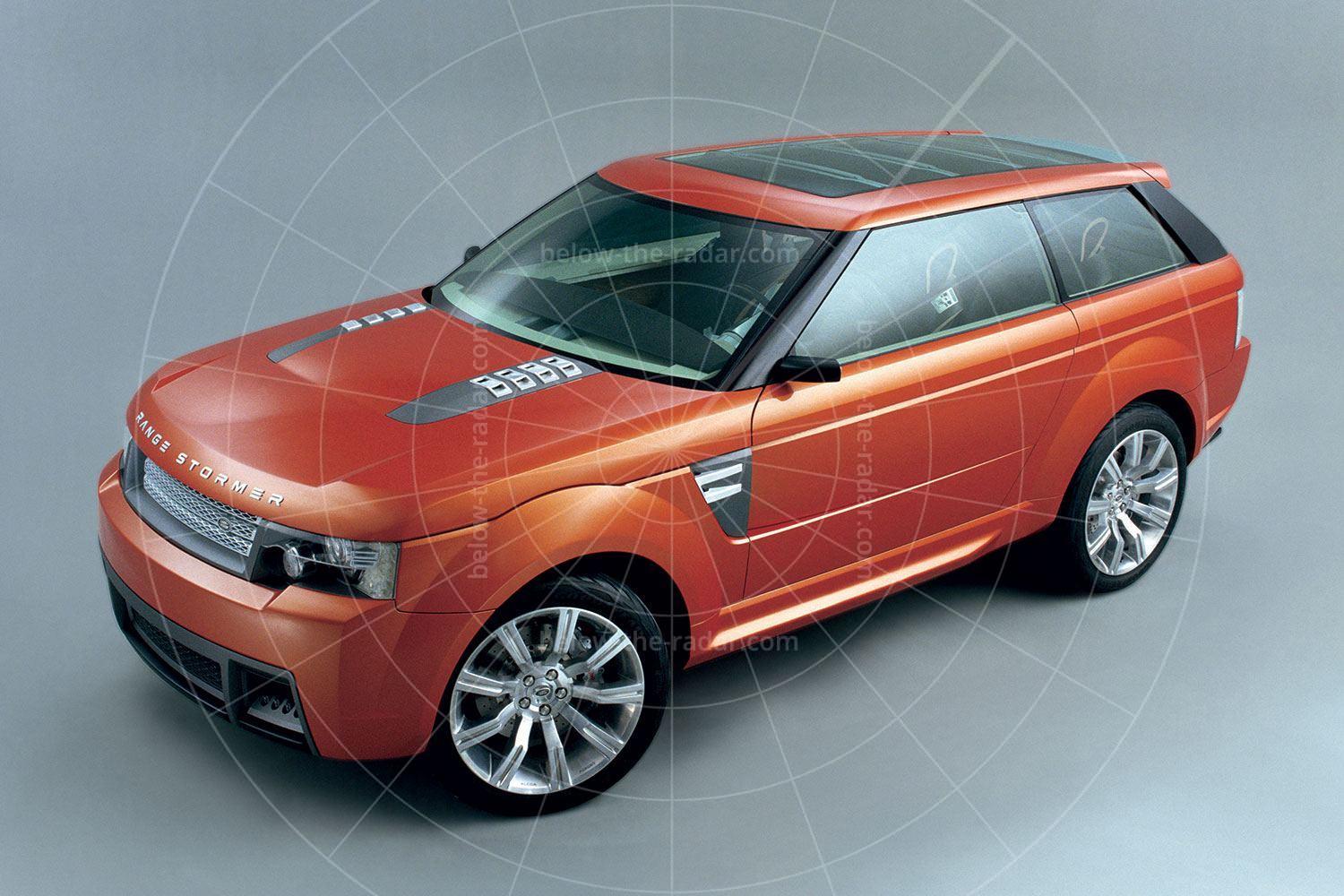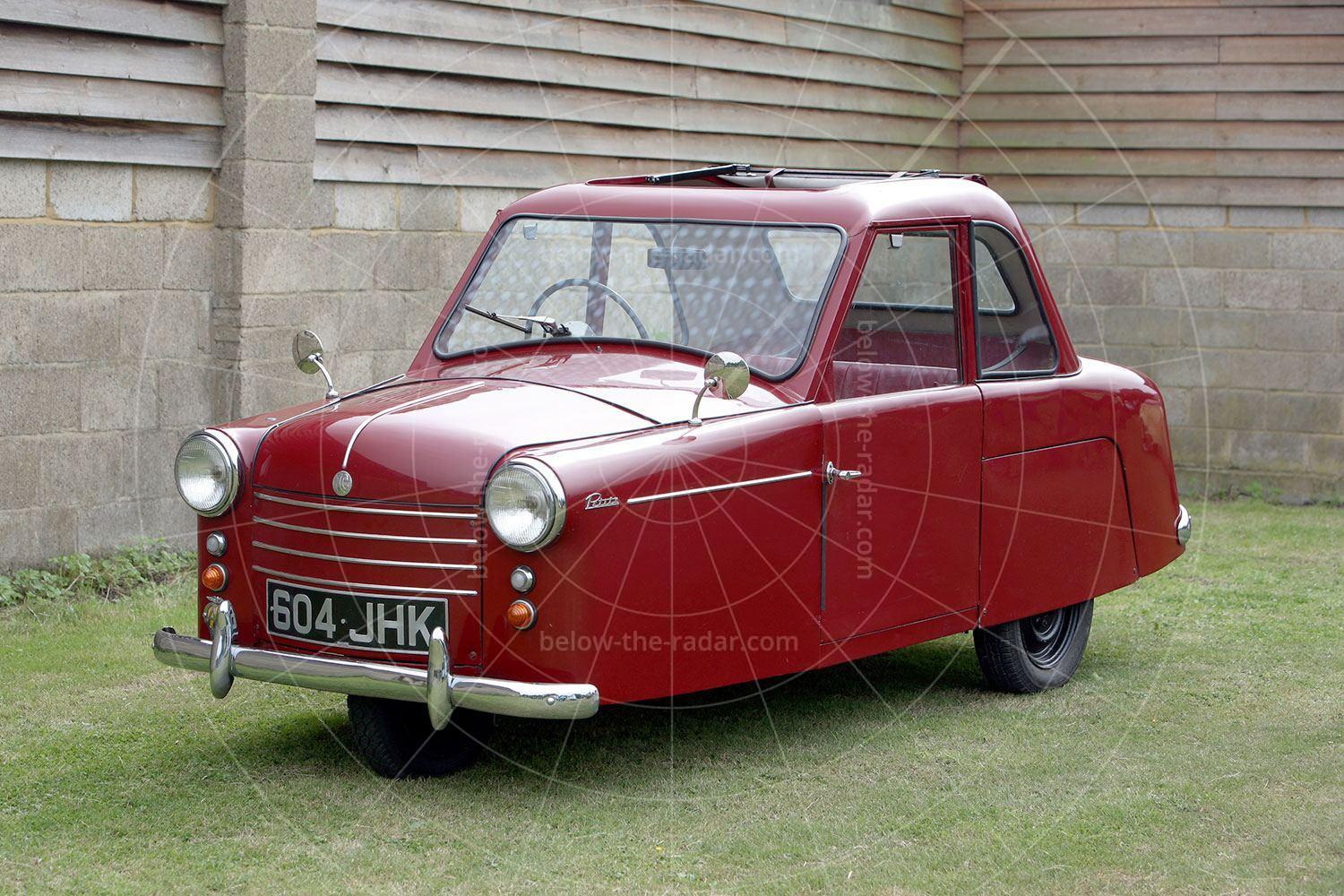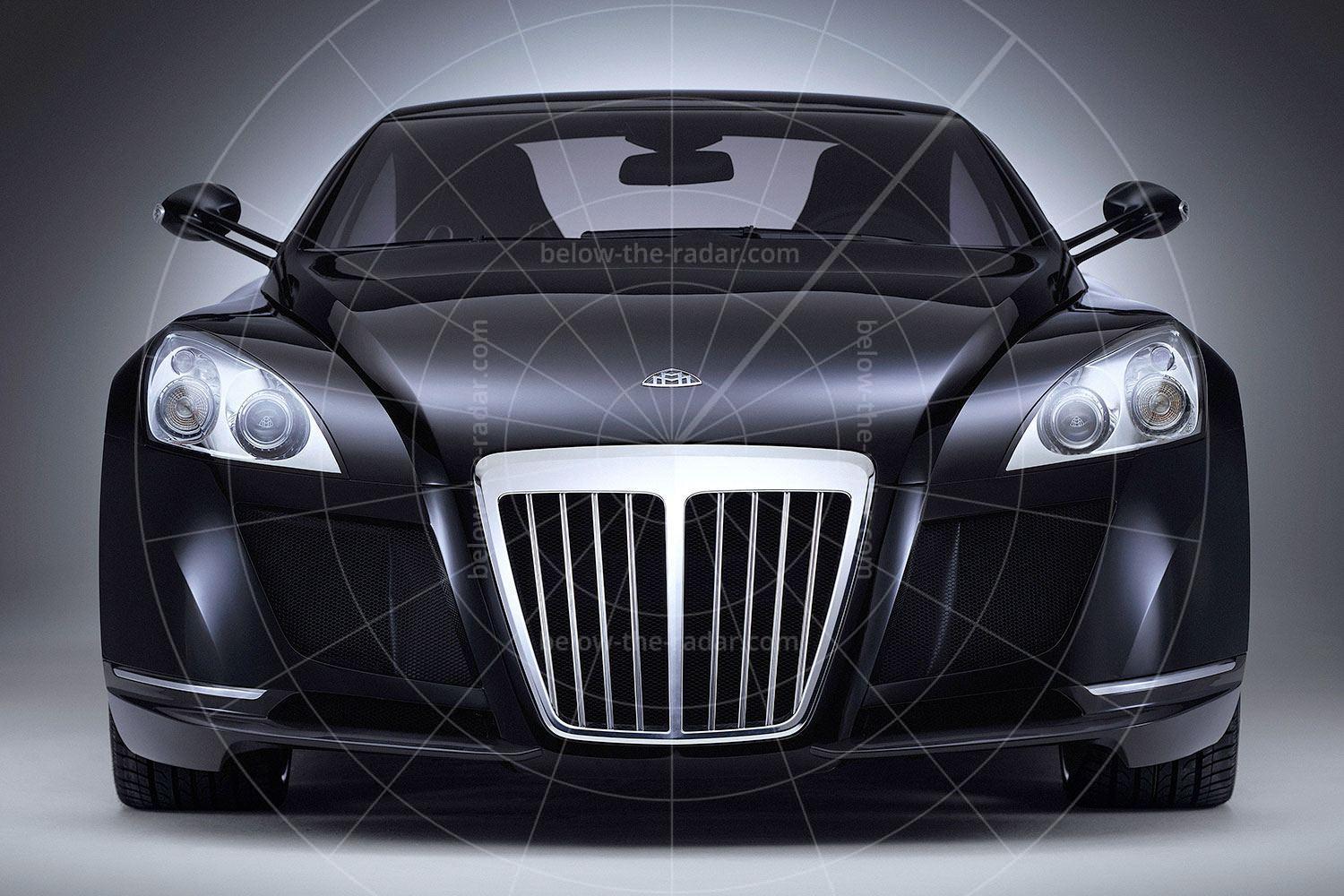As you can read on the page about Bill Tritt and his Glasspar G2, glassfibre would prove to be a dream material for those who wanted to get into car manufacture on a small scale, without having to charge outrageous prices. In the wake of World War 2, US servicemen returning home had an appetite for the cheap sports cars that has been readily available in Europe, especially in Britain, but in the US there was nothing available at an affordable price.
The Chevrolet Corvette would be announced in 1953, which was relatively attainable, but a much more accessible solution lay in producing new bodyshells for old cars, giving them a fresh lease of life and allowing something much sportier to be created than what went before. It helped that in those days car makers used separate-chassis construction, allowing old bodyshells to be swapped for new ones, carrying the running gear over wholesale. That's what Bill Tritt did with his Glasspar G2; a Willys Jeep was sacrificed to create a much sleeker two-seater sports car that was light, fast and nimble.
Glasspar was based in California, and so too was automotive entrepreneur Blanchard Robert 'Woody' Woodill. He ran one of the biggest Willy dealerships in the US, as well as being a Chrysler distributor. His father had sold the products of Maxwell, Dodge and Willys-Knight before WW2, but in 1948 Woody took over the business and also took on a Willys franchise.
By 1952 Woodill Jnr was clearly doing pretty well in business and he decided that it was time to treat himself to a new sports car. He set his sights on a Jaguar XK120, but he was persuaded to look elsewhere by his service manager who frightened him off the idea with tales of high maintenance and repair costs. So instead, aware of Bill Tritt's new wonder car, Woodill decided to build his own G2 using Willys parts which he could get at cost price, as a Willys dealer.
In May 1952 Woody Woodill visited Bill Tritt to buy a pair of G2s; one for himself and one to build and sell on at a profit, to fund the construction of his own car. Just six months later, in November 1952, Woodill's first completed car was shown at the third annual Petersen Motorama. Just like the G2 had done when it was unveiled, Woodill's car created a huge amount of interest, not least of all from the suits at Willys who were really taken by it. They were so keen on the car that they flew it and Woodill to their Toledo headquarters, where discussions were started to explore the prospect of Woodill building the car to be sold through Willys dealers.
All of this was at the end of 1952, and by February 1953 Woodill was in Time magazine being quoted as saying that his new sports car would be available soon, through Willys dealers as the Wildfire. However, there was one major hurdle; one that was insurmountable. In August 1952 Willys had been swallowed up by the Kaiser-Frazer Corporation, which was already working on its own G2-based sports car, which would emerge in 1954 as the Kaiser-Darrin 161, complete with sliding doors. Unhappy with Woodill's very public announcement of the new car, Willys released an official statement to say that it would be having nothing to do with any forthcoming Wildfire.
Before Woodill's sportscar project had even got off the ground it was stopped in its tracks. But Woodill was keen to be more than a mere seller of cars. What he really wanted was to be seen as a maker of them too. Undeterred by the impending arrival of the Kaiser-Darrin, Woodill decided in 1953 to go it alone, so he set off on a quest to join the ranks of kit car producers in the US, of which there were already about 30 by this point.
Woodill began working with Tritt and Glasspar on his own G2-based sports car, but neither side wanted to produce simply a G2 with a few bits adjusted to make it unique to Woodill. What was required was something significantly different, so Tritt came up with a similar but fresh design that featured a higher waistline with opening doors on both sides. The car was stretched a little to increase cabin space, and a continental-style spare wheel arrangement freed up boot space. Perhaps most usefully, whereas the Glasspar G2 bodyshell came as one piece, which the owner had to cut to create a bonnet and doors that opened, the Woodill bodyshell came with everything opening – including the boot lid. He even supplied locks and hinges for the doors, which were double skinned.
Having been cut loose by Willys, Woodill reckoned that Ford and Mercury parts would be the easiest and cheapest to source, so he developed his kit to accommodate a flat-head V8 from either of those brands, with the bodyshell ideally being based on a 1939-48 Ford chassis. However, the Ford-based cars followed in the wake of seven Wildfires built using Willys six-cylinder engines.
Woodill promoted the fact that two men could build a Wildfire in as little as 14 hours, but in reality most buyers spent several months putting their car together. Woodill charged $228 for a complete chassis and $995 for a bodyshell (or $1208 for the two together), but by 1954 this price had risen to a more substantial $1617. For twice as much ($3260) it was possible to buy a ready-built Wildfire with all-new parts. Two were supplied to local Cadillac dealers, using Cadillac running gear.
By 1956 it was all over for two key reasons. Firstly, Glasspar was finding Woodill increasingly difficult to work with and they didn't want or need the hassle. But that difficult relationship notwithstanding, by the time the mid-fifties arrived, so too did a raft of more affordable British sports cars such as the MGA, Triumph TR2 and Austin Healey 100.
It's not known how many Woodill Wildfires were sold, although around 30 survivors have been tracked down. Woodill claimed that a dozen ready-built Wildfires were delivered along with around 300 kits, but Bill Tritt reckoned no more than 90 bodyshells were produced, so who knows?
* The car pictured was sold by Hyman Ltd and is believed to be one of only a handful of Wildfires purchased as kits by the Harry Clark Buick Agency of Compton, California, and modified with styling cues and drivetrains from the Buick line. At the front, the body was altered to incorporate 1953 Buick headlights and a shortened, modified 1953 Chevrolet grille. At the rear, moulds of a 1953 Buick’s rear wings were taken and transferred to glassfibre to give it a consistent look with the rest of the Buick line. Finally, Clark added a continental kit spare wheel and a curved windscreen. Under the bonnet, Clark dispensed with the standard Wildfire’s inline-six-cylinder engine in favour of Buick’s powerful new overhead valve 322ci (5274cc) 'Nailhead' V8.
Many thanks to Hyman Ltd for the use of its pictures to illustrate this article.

